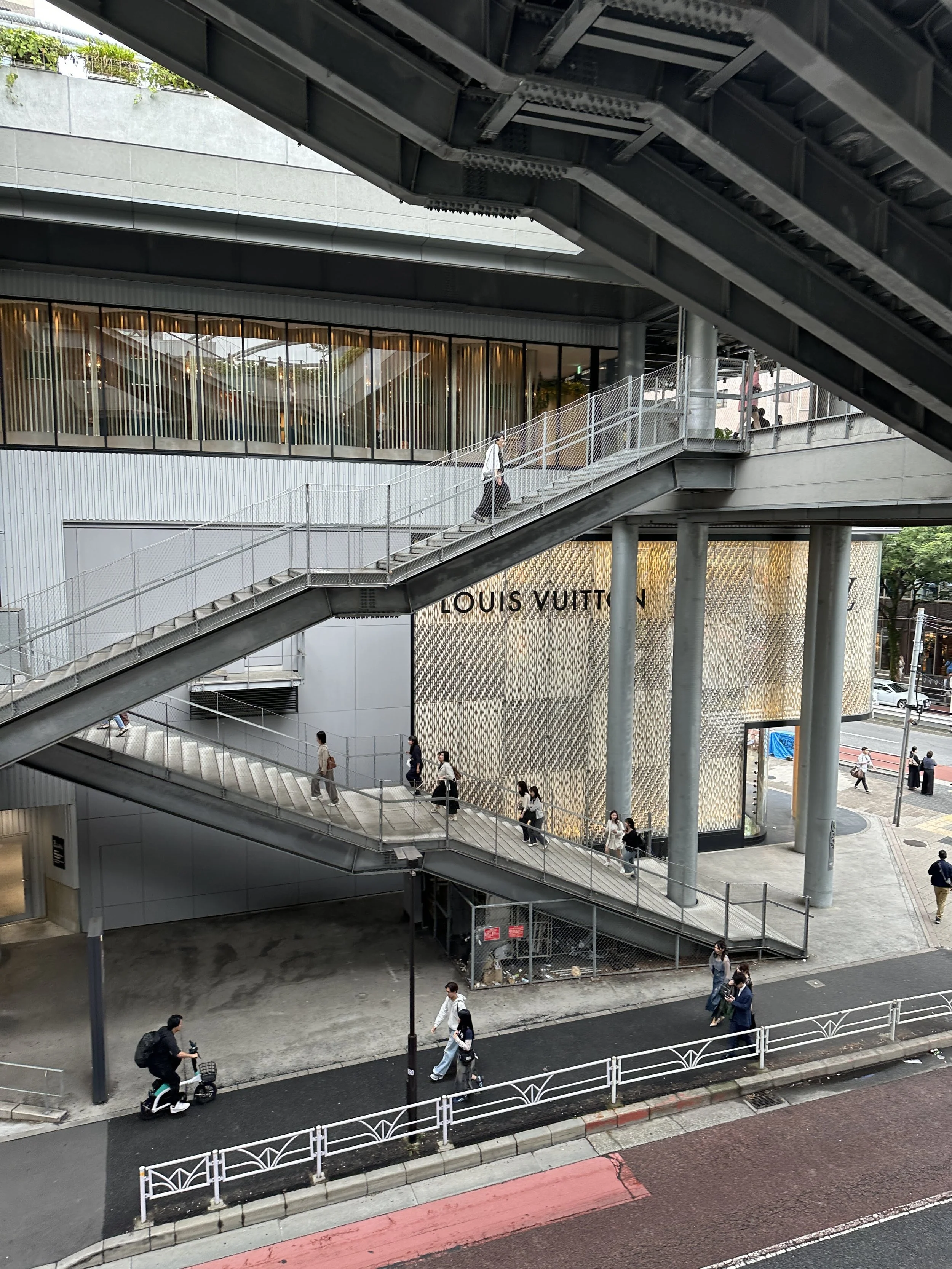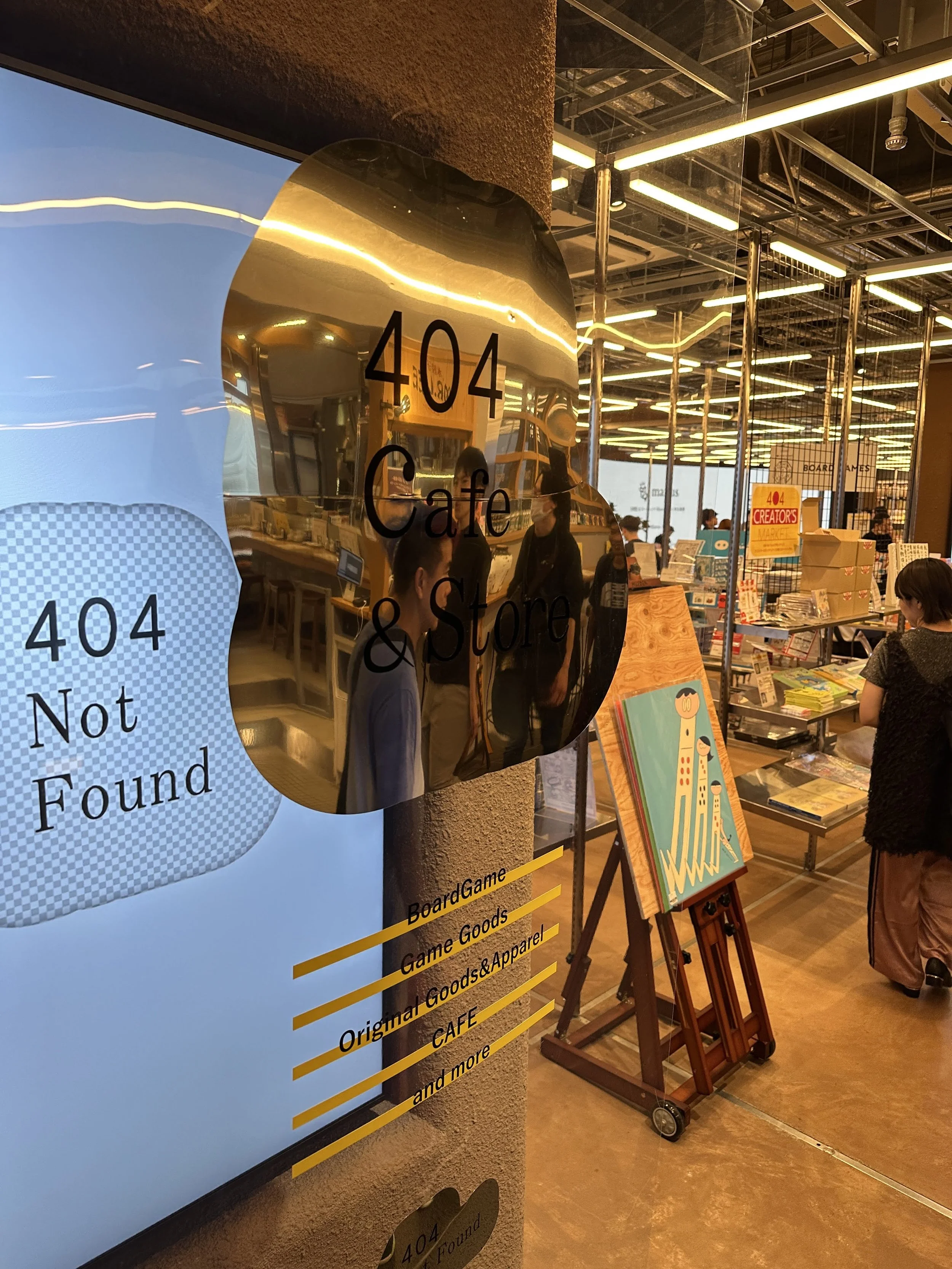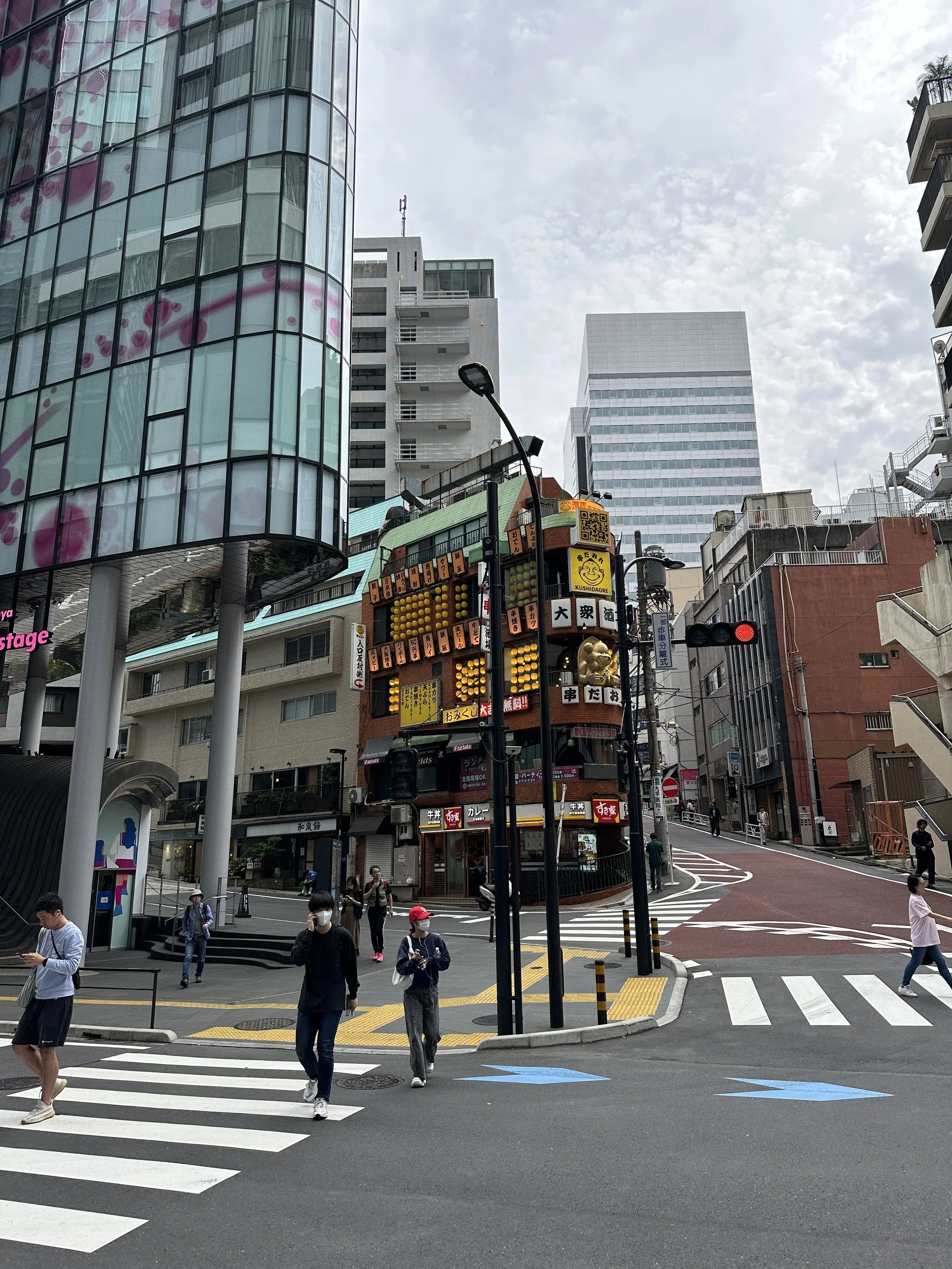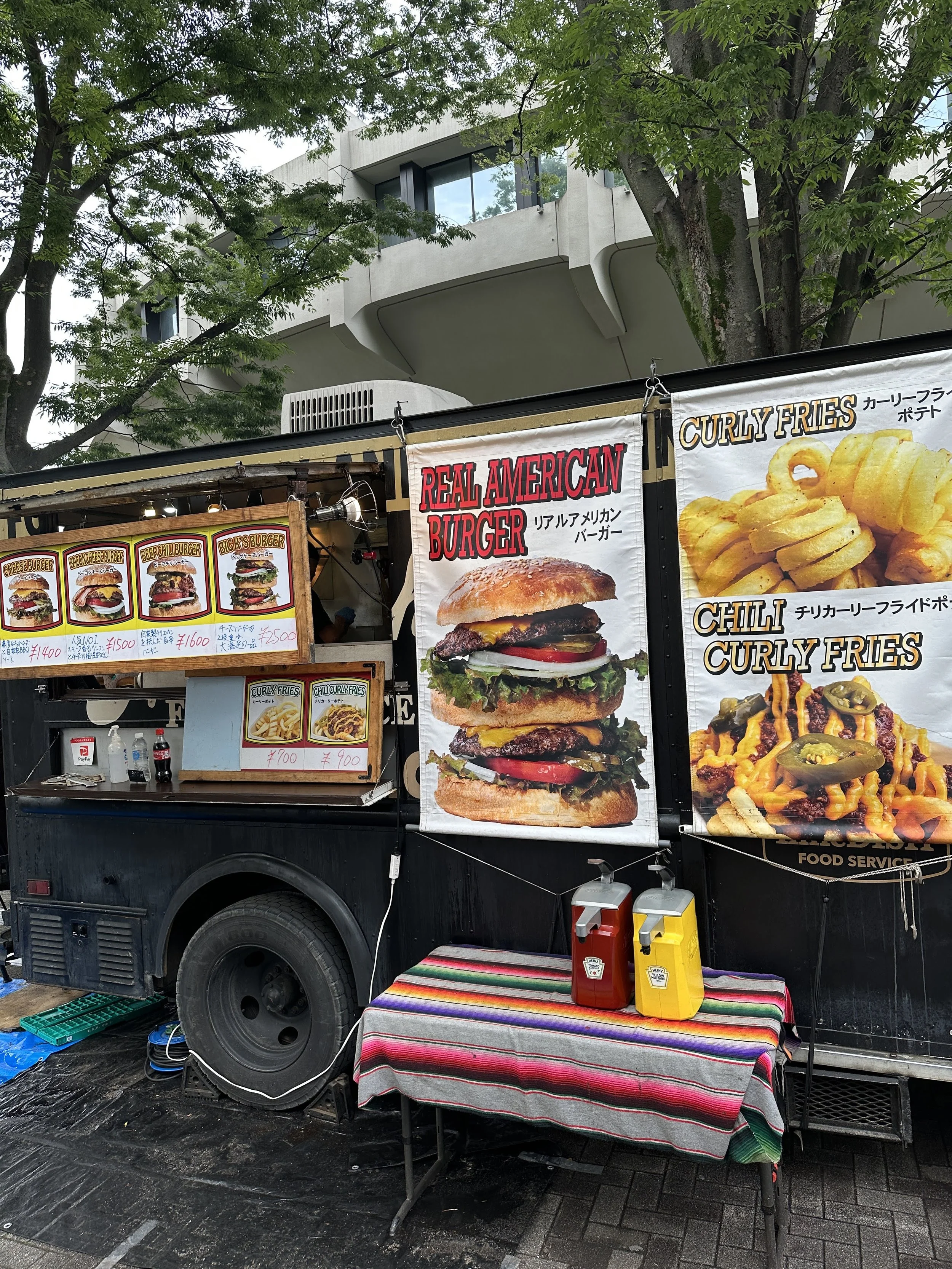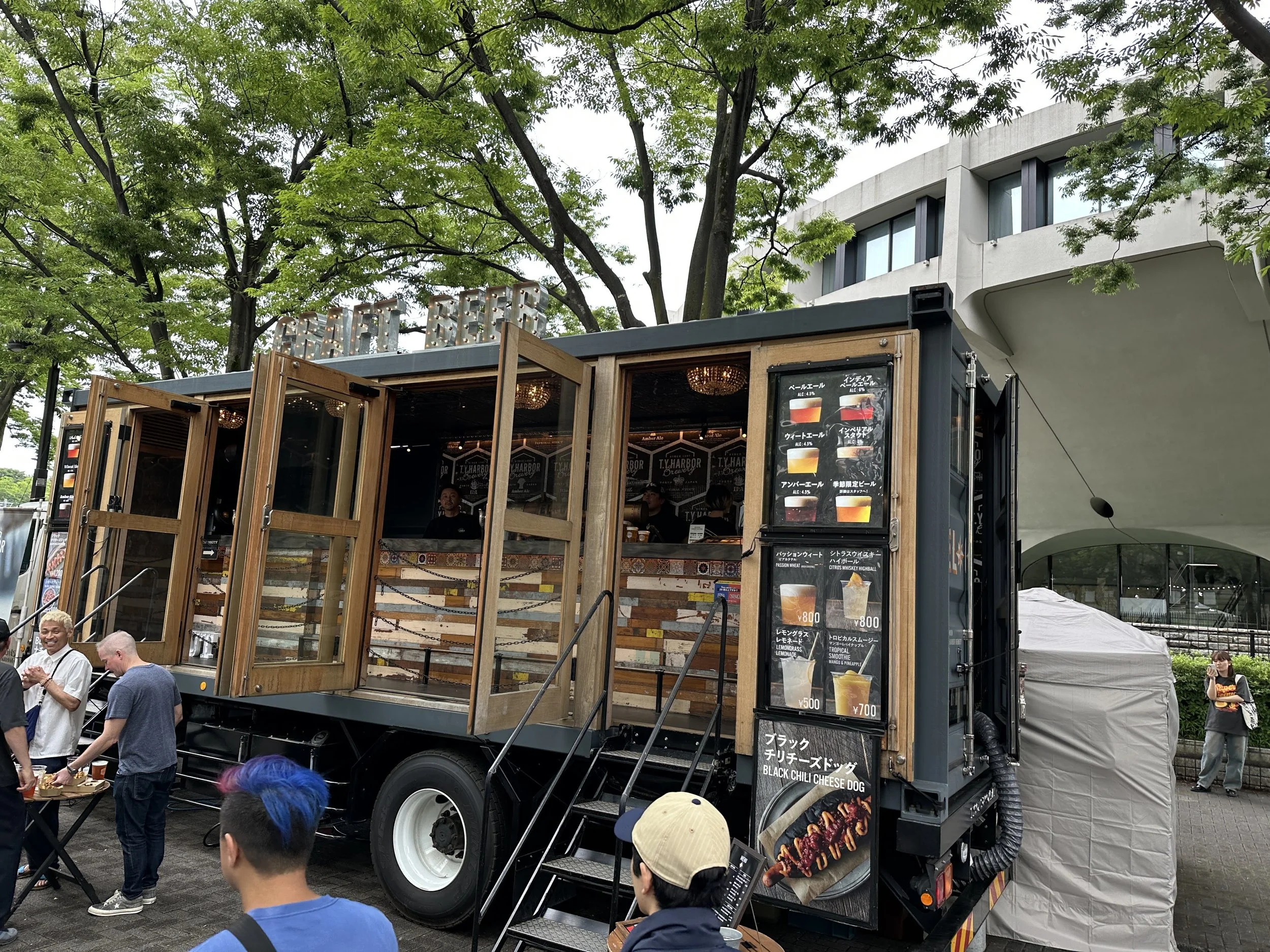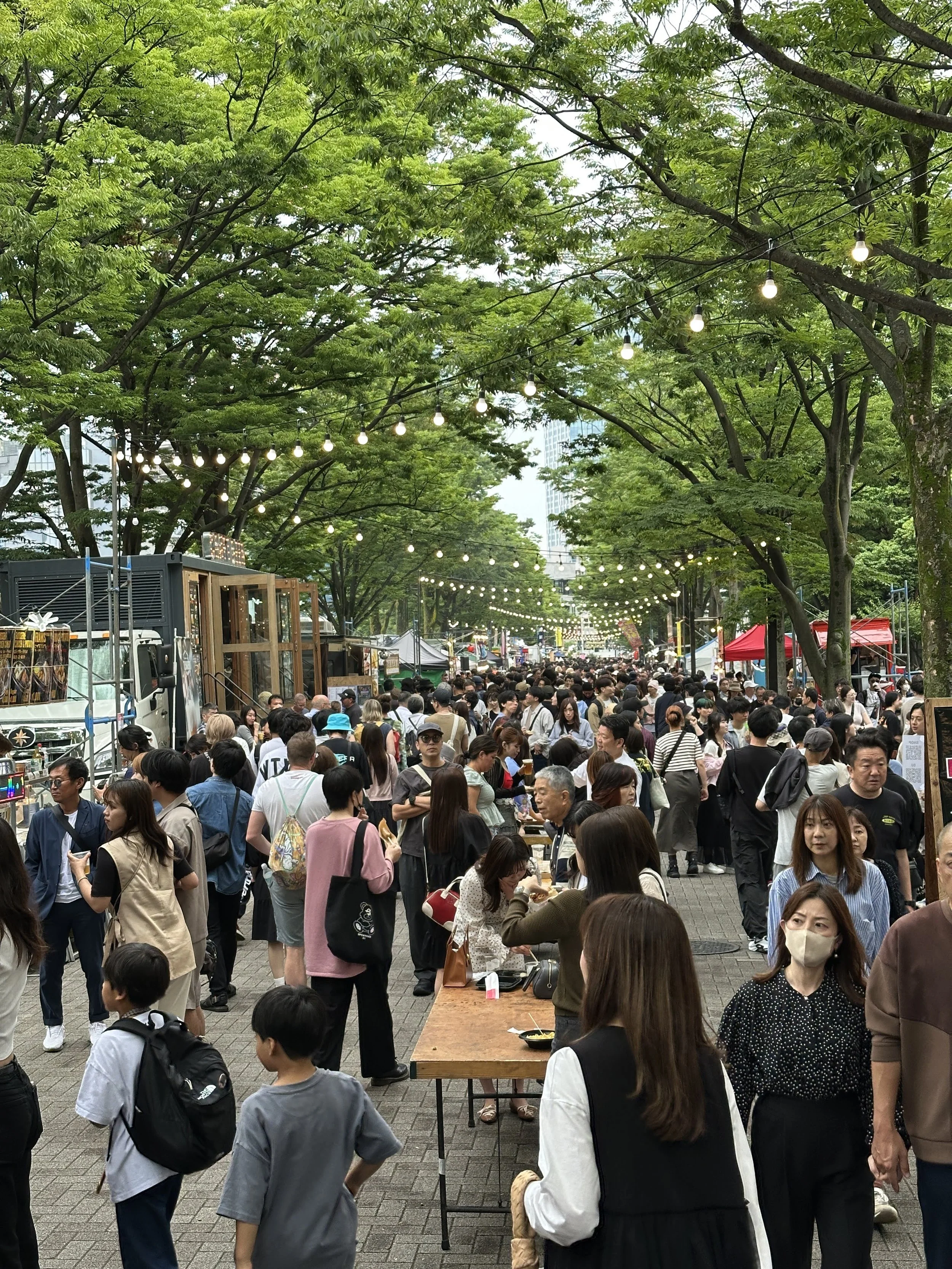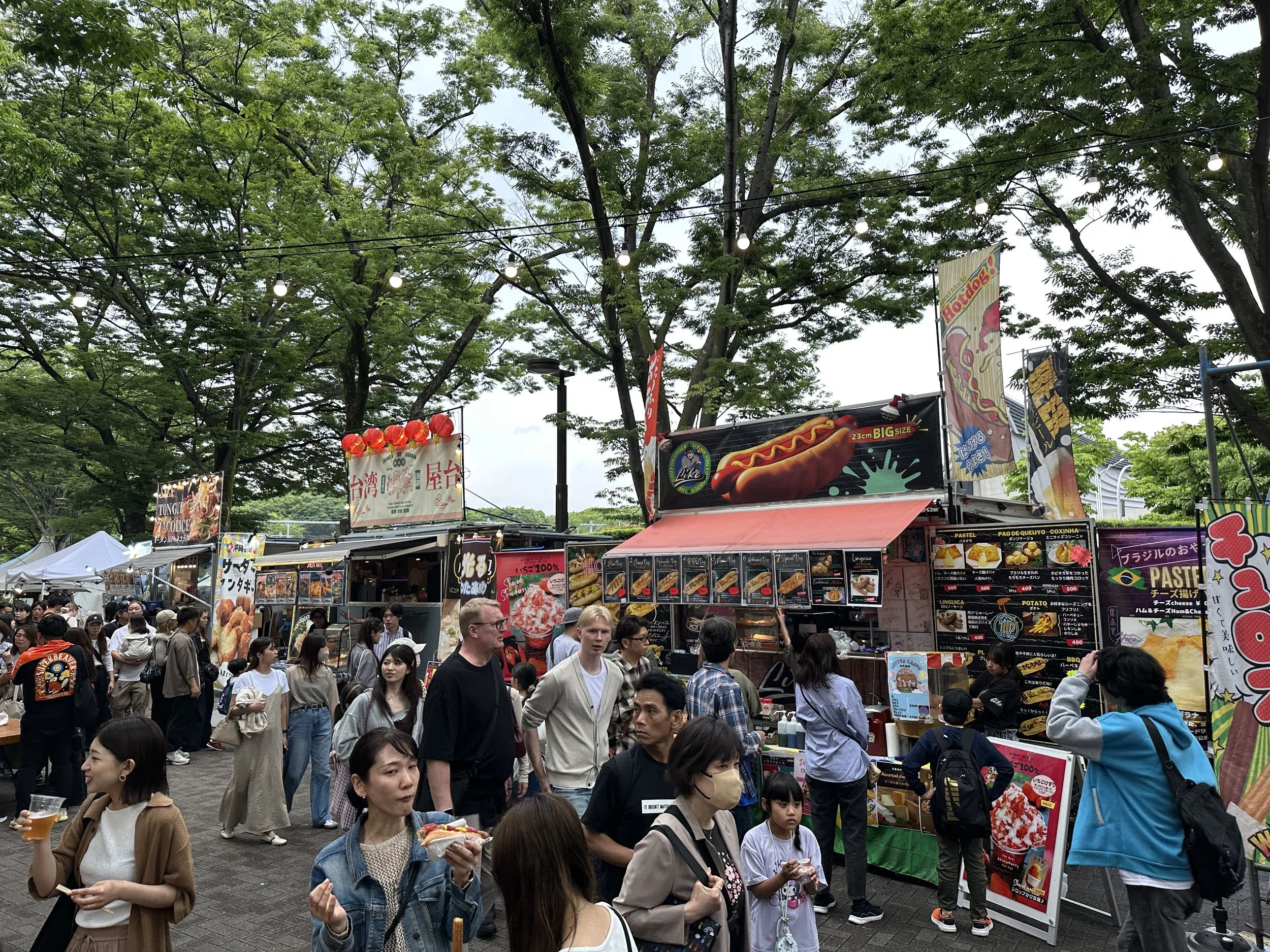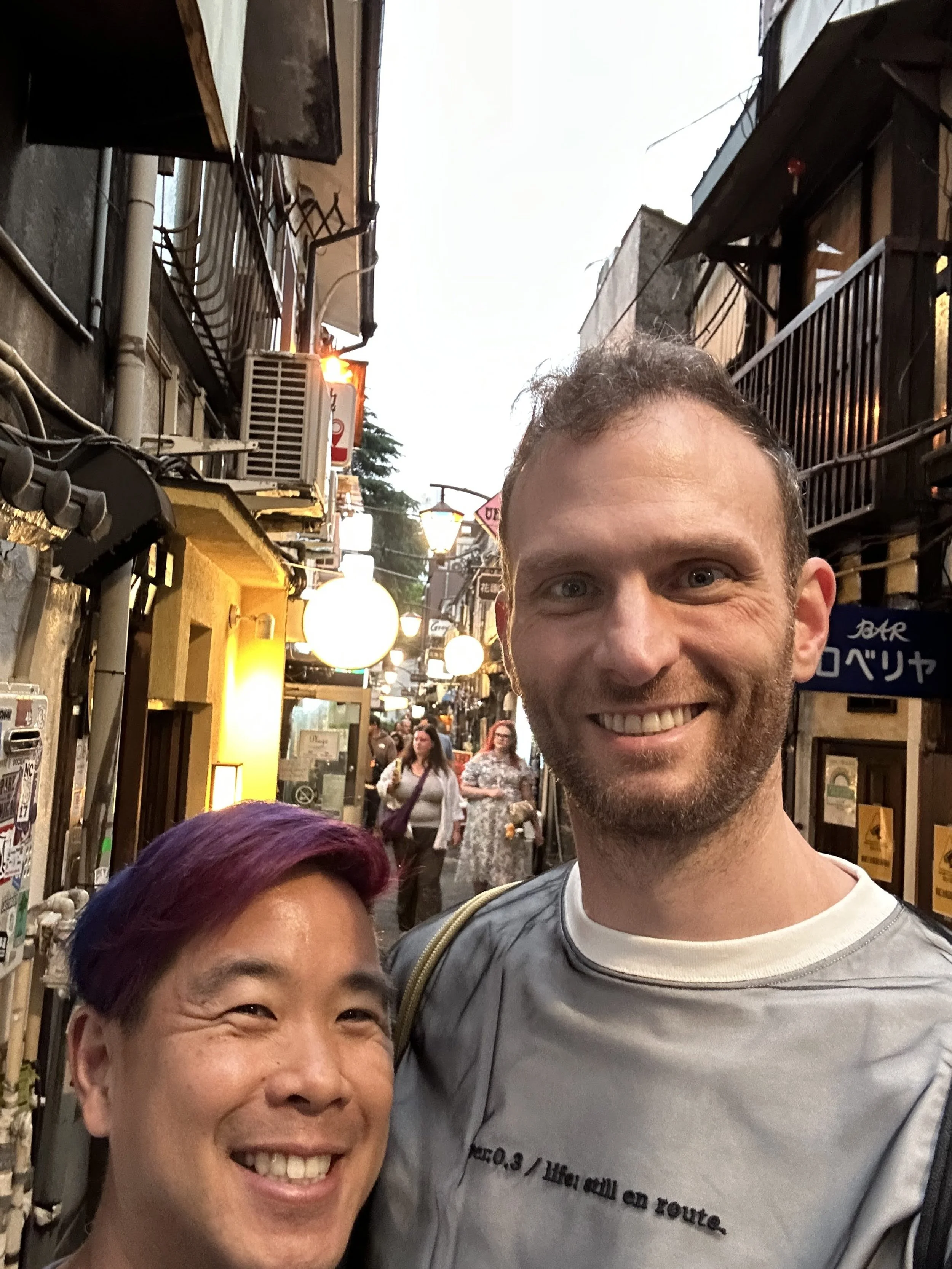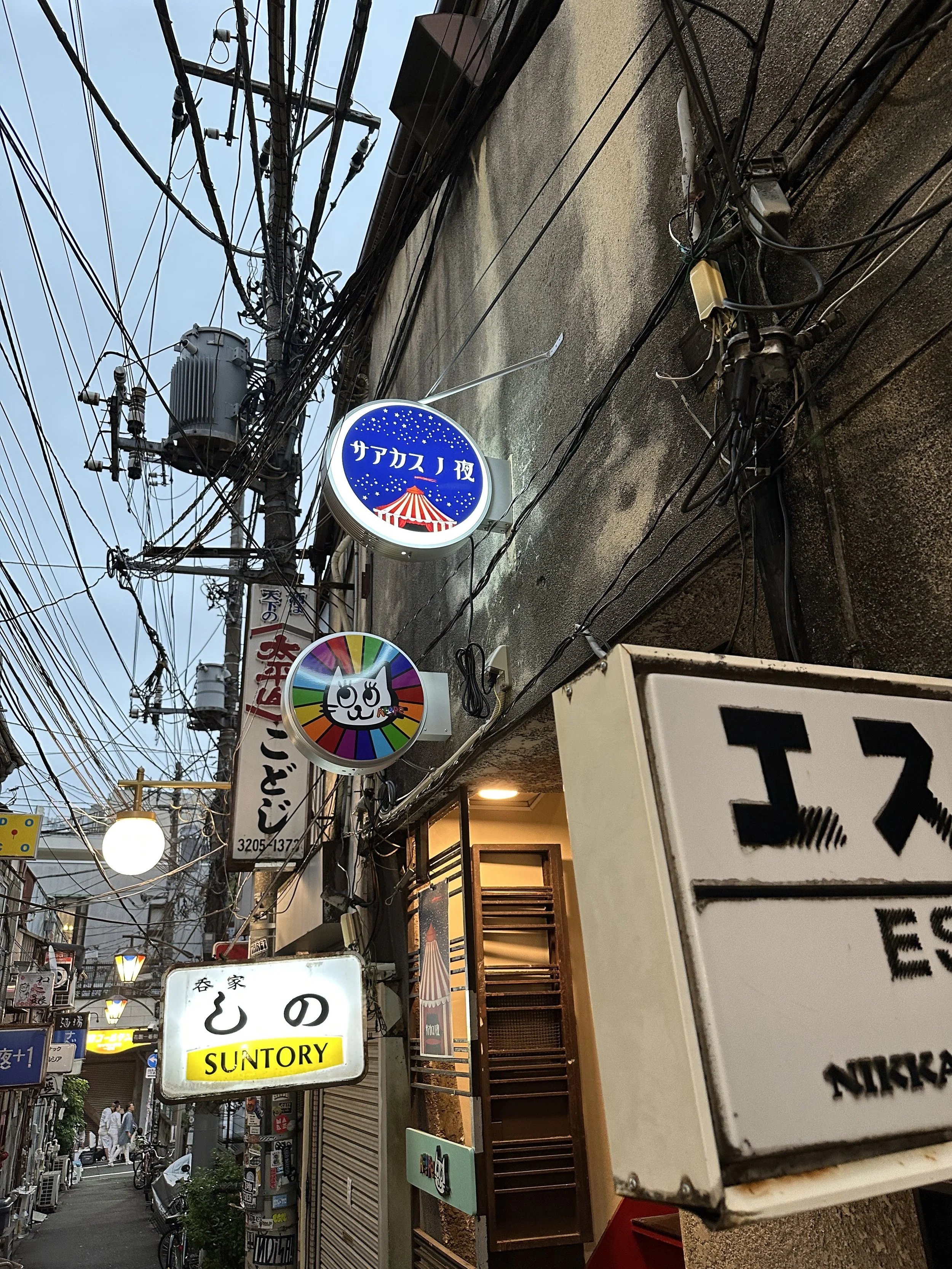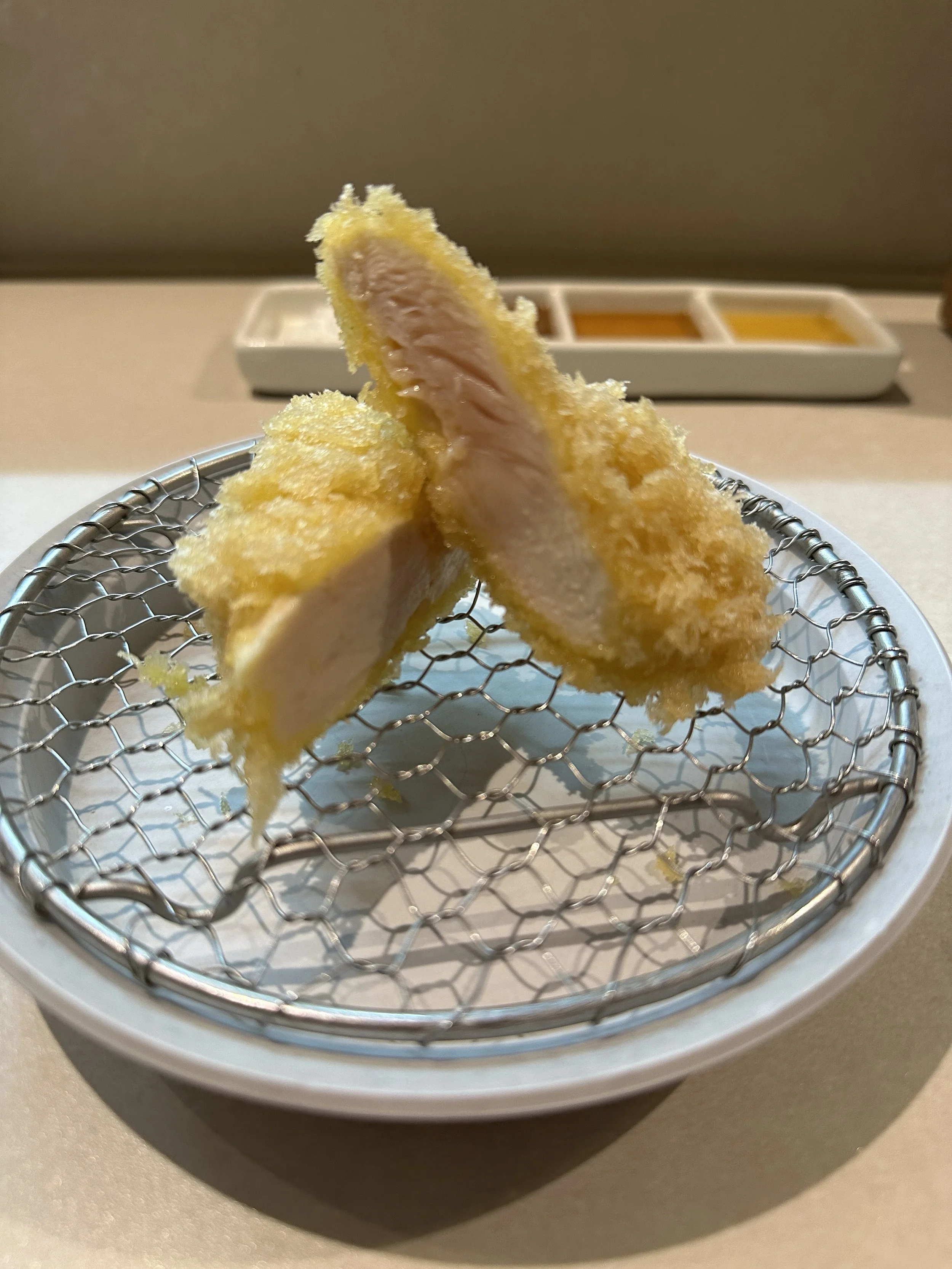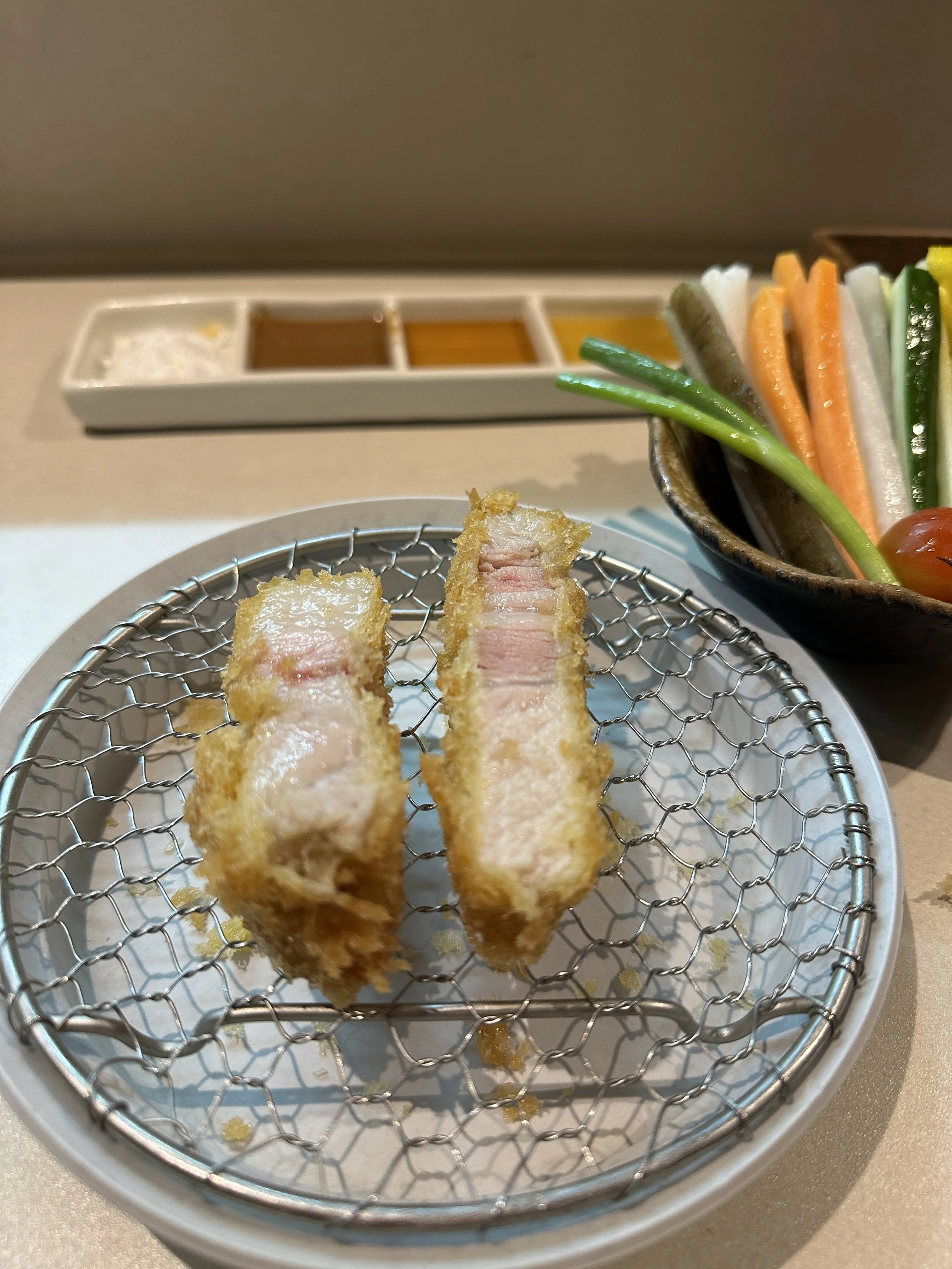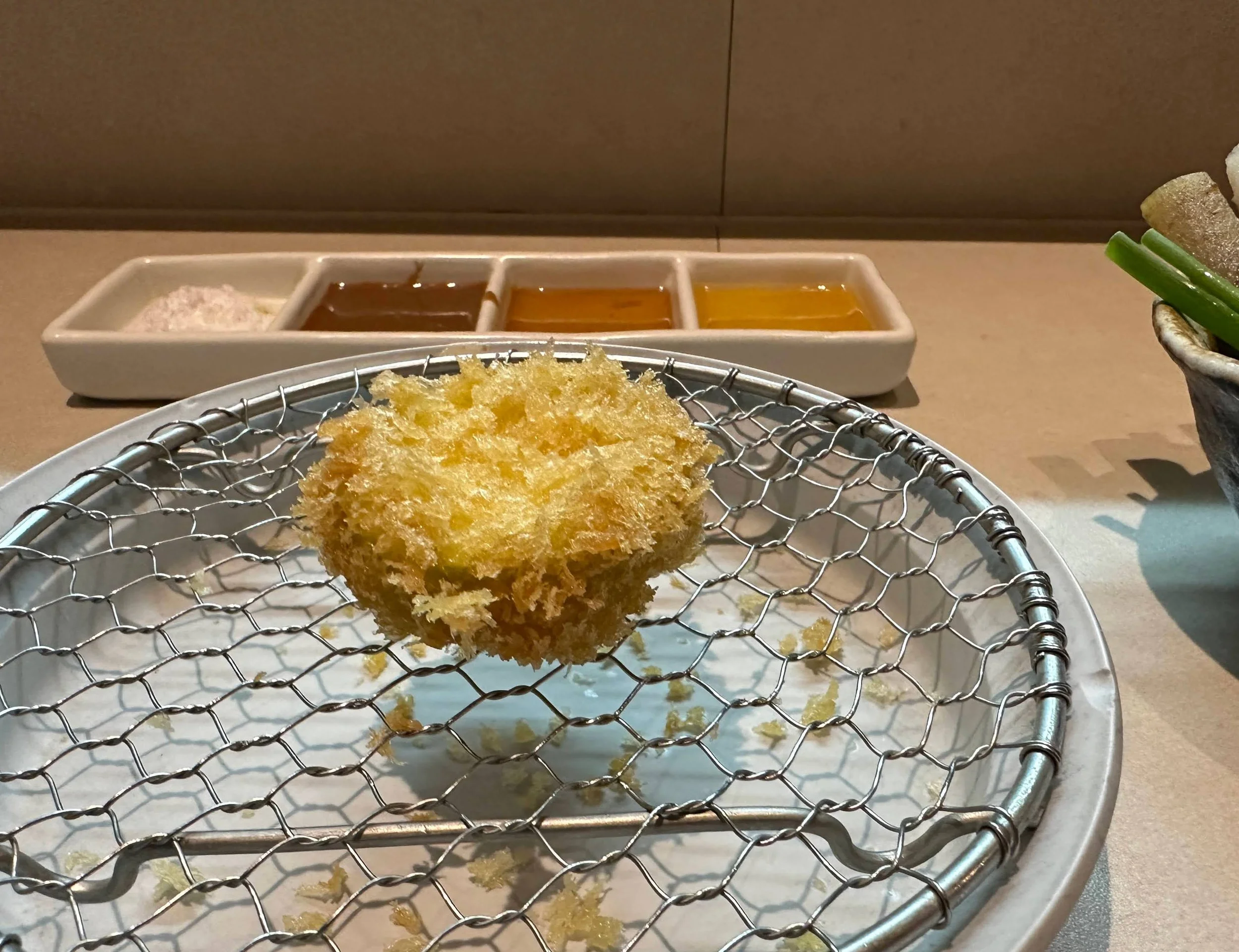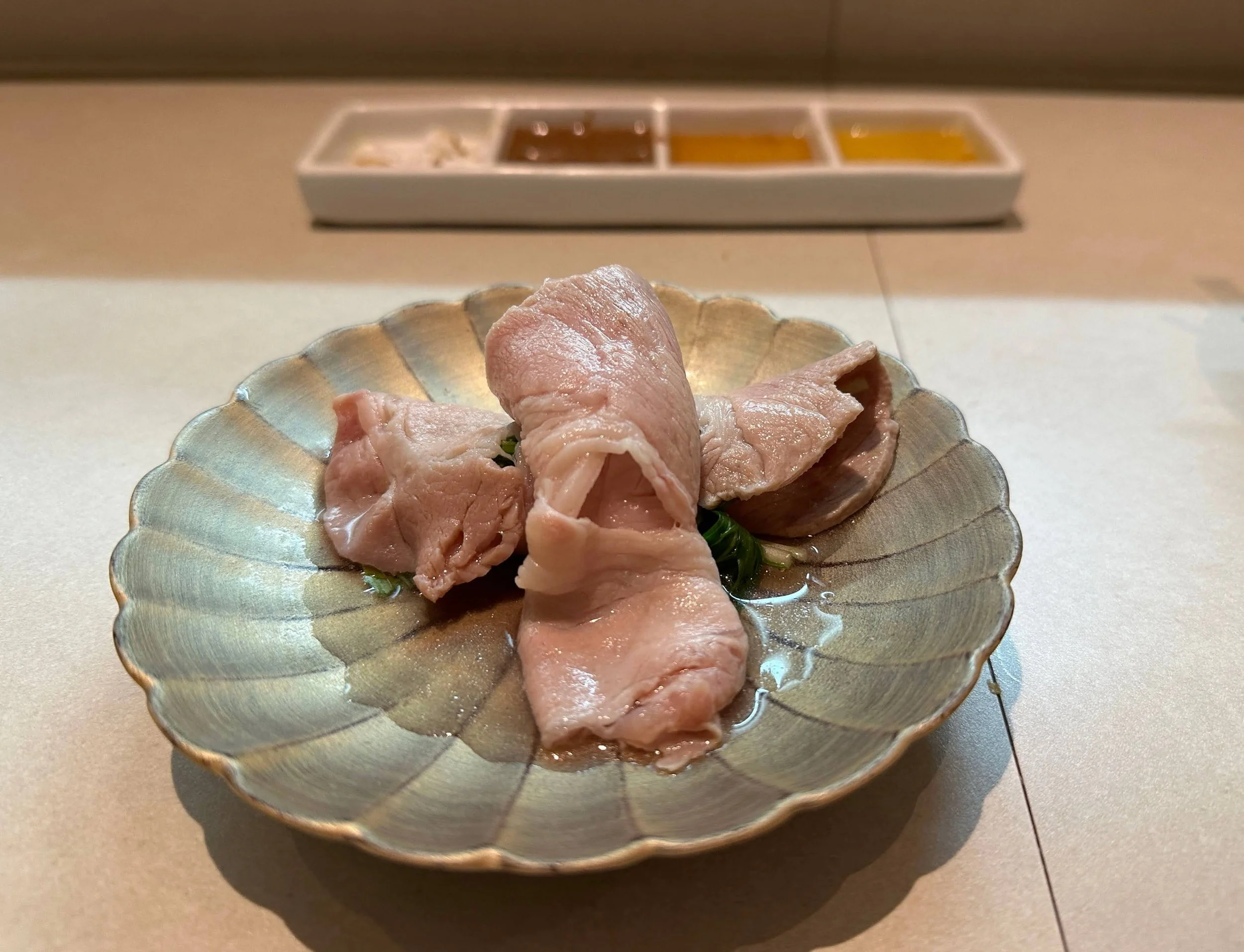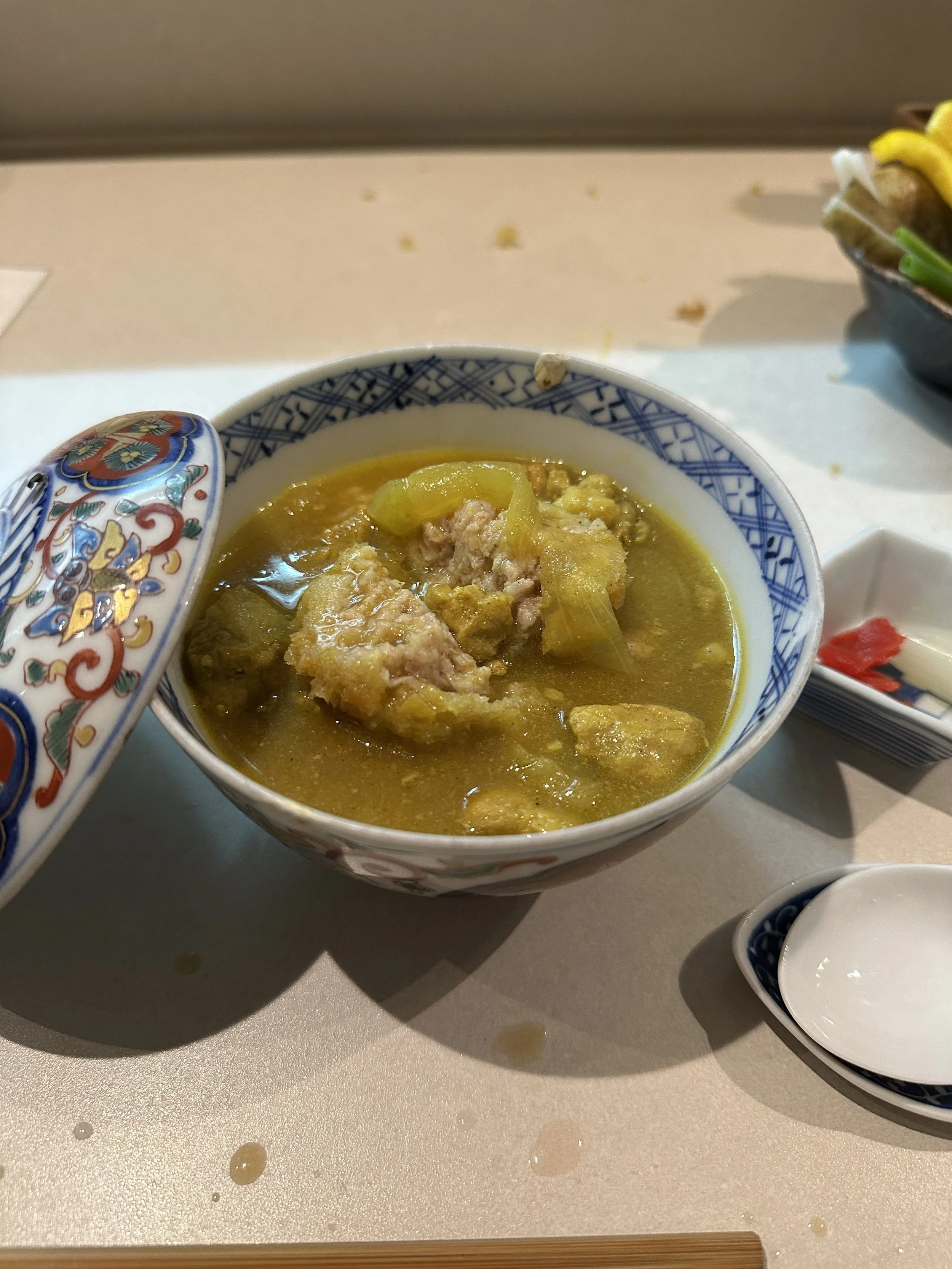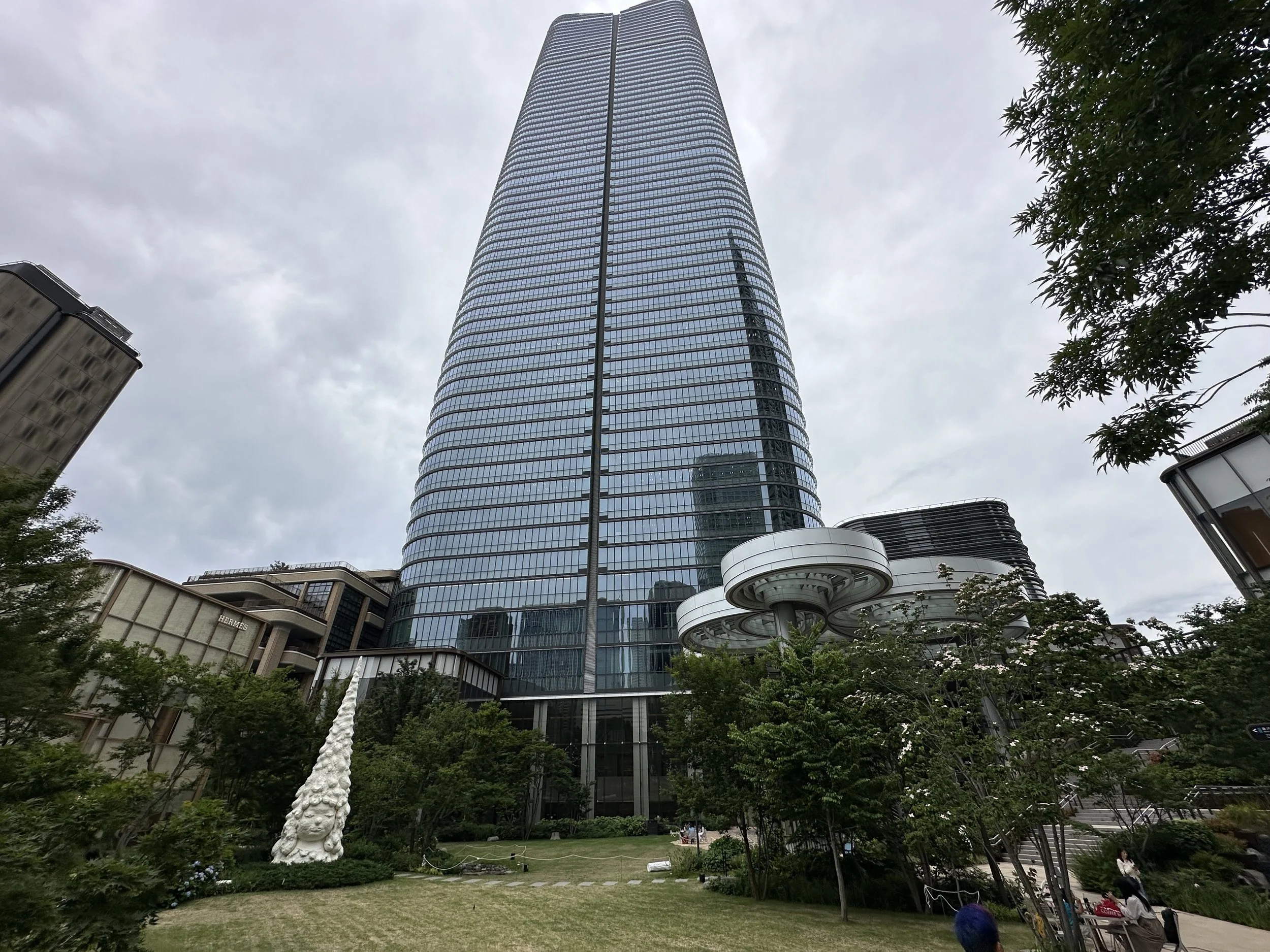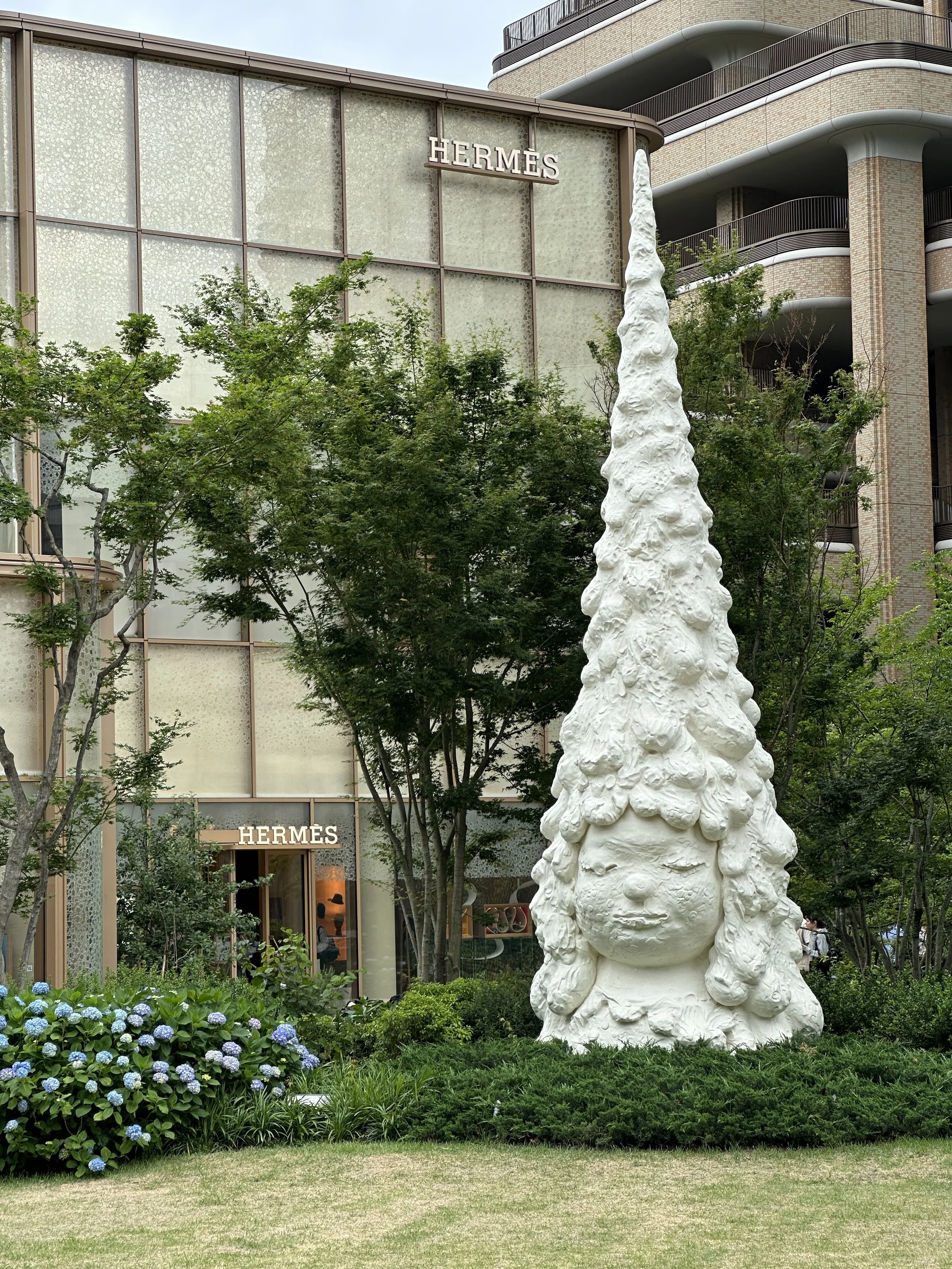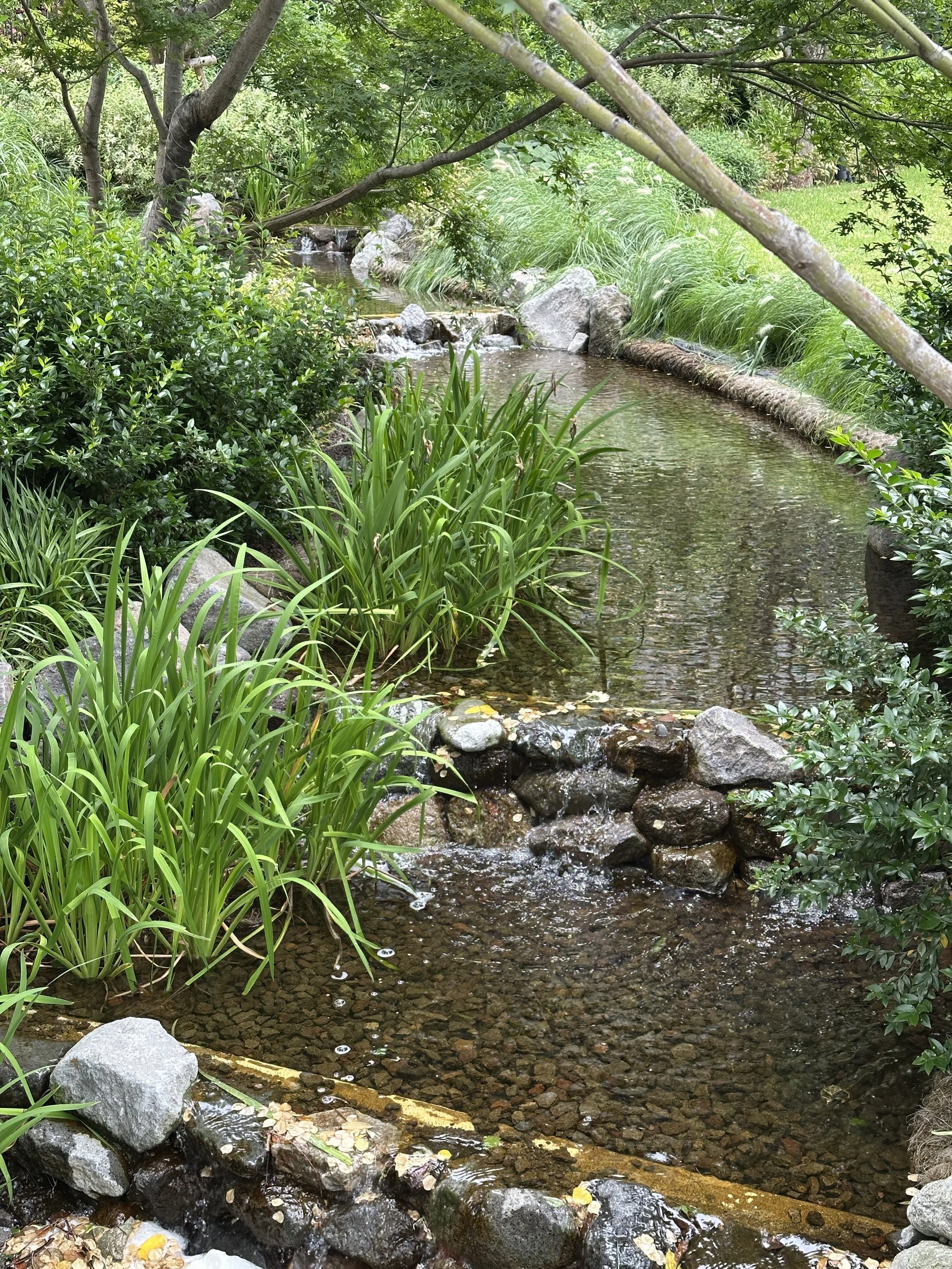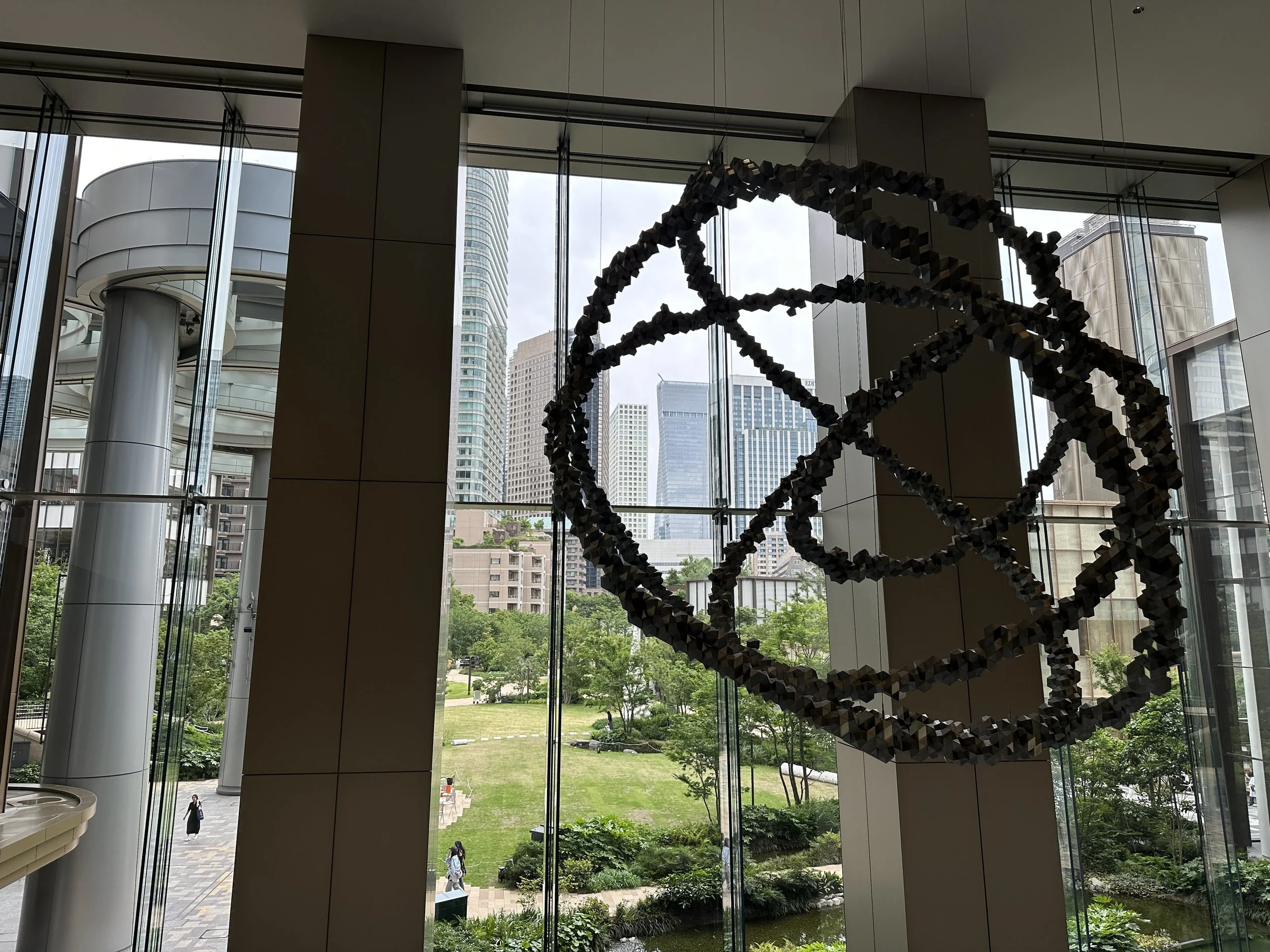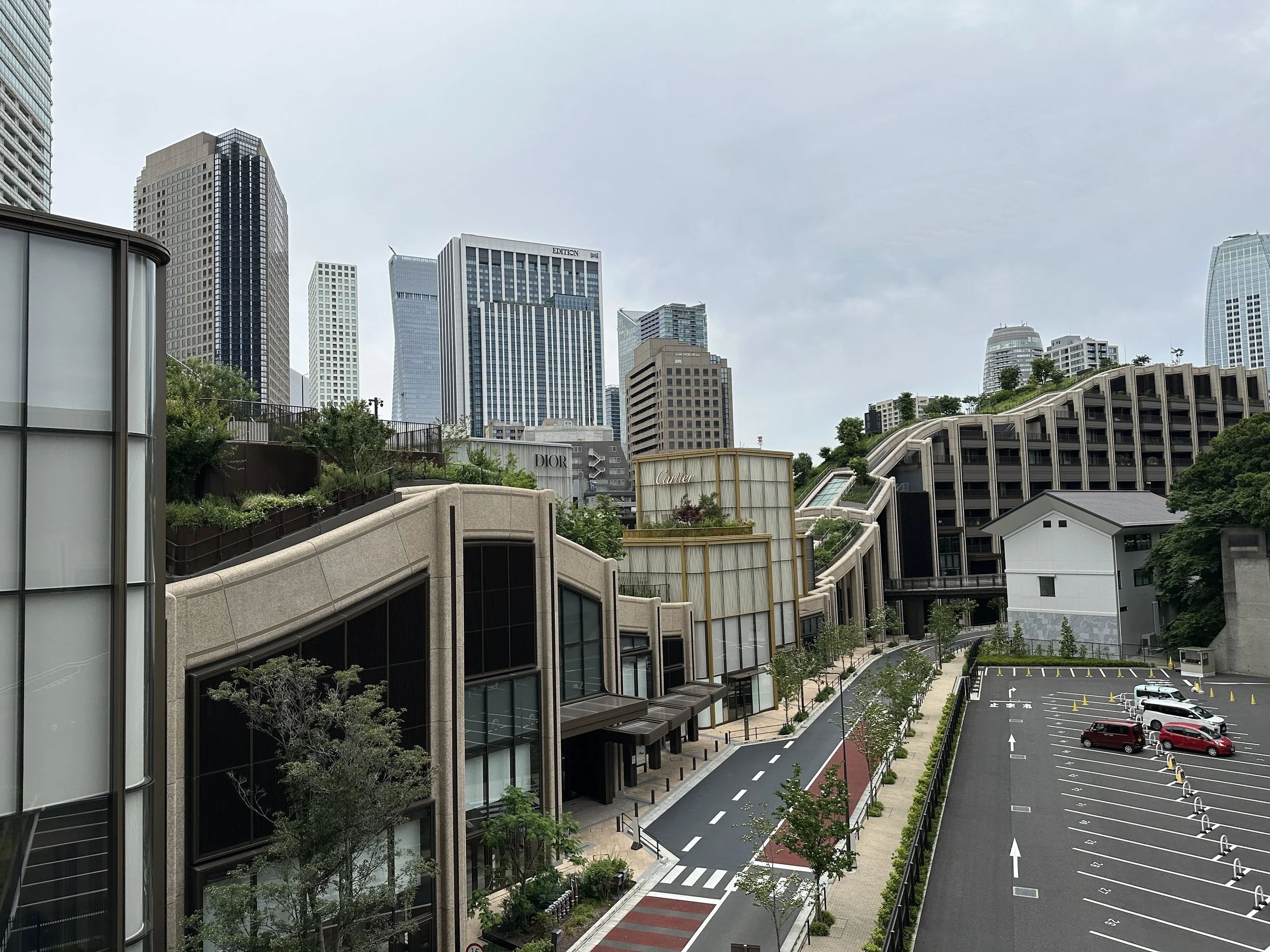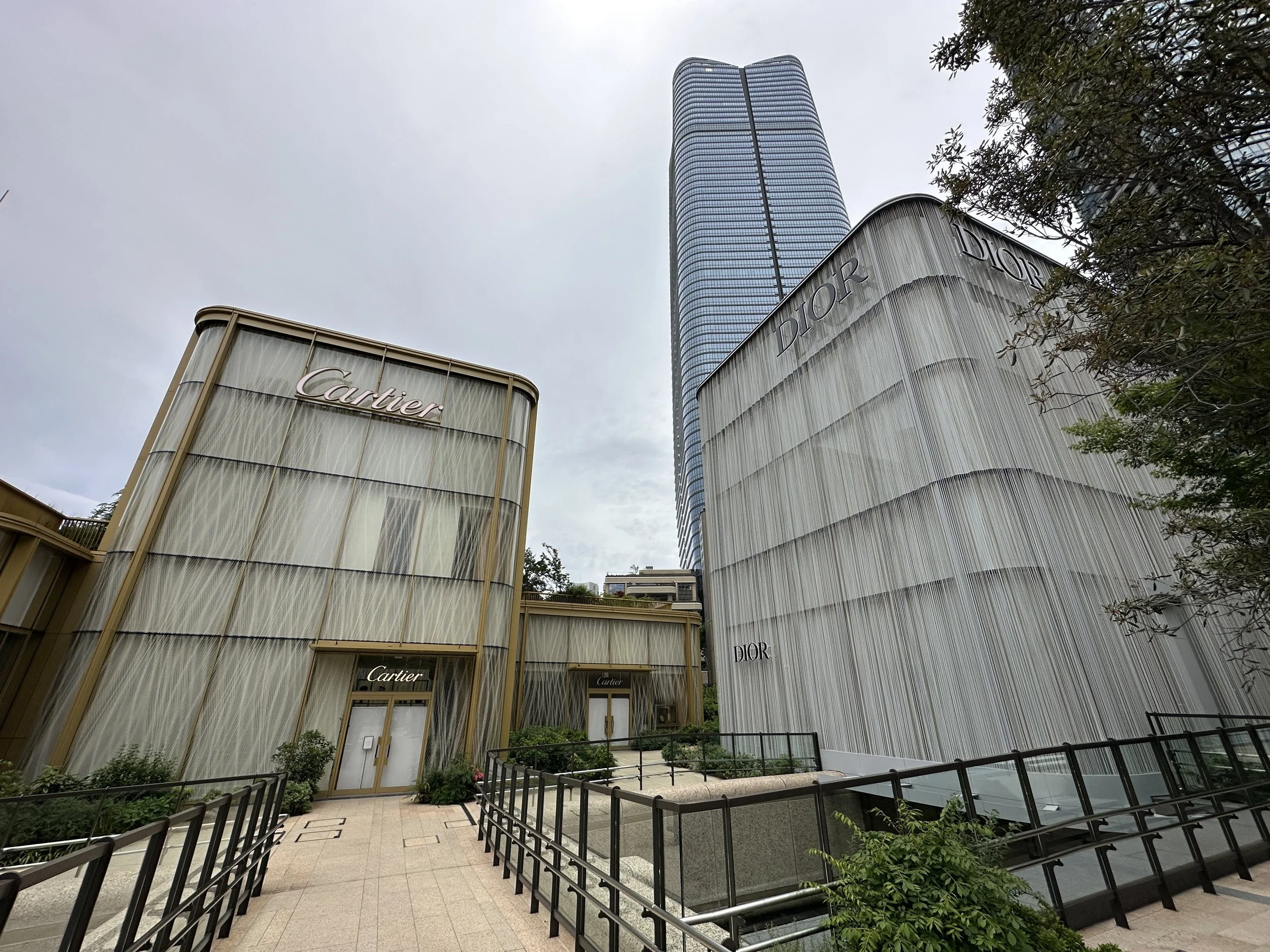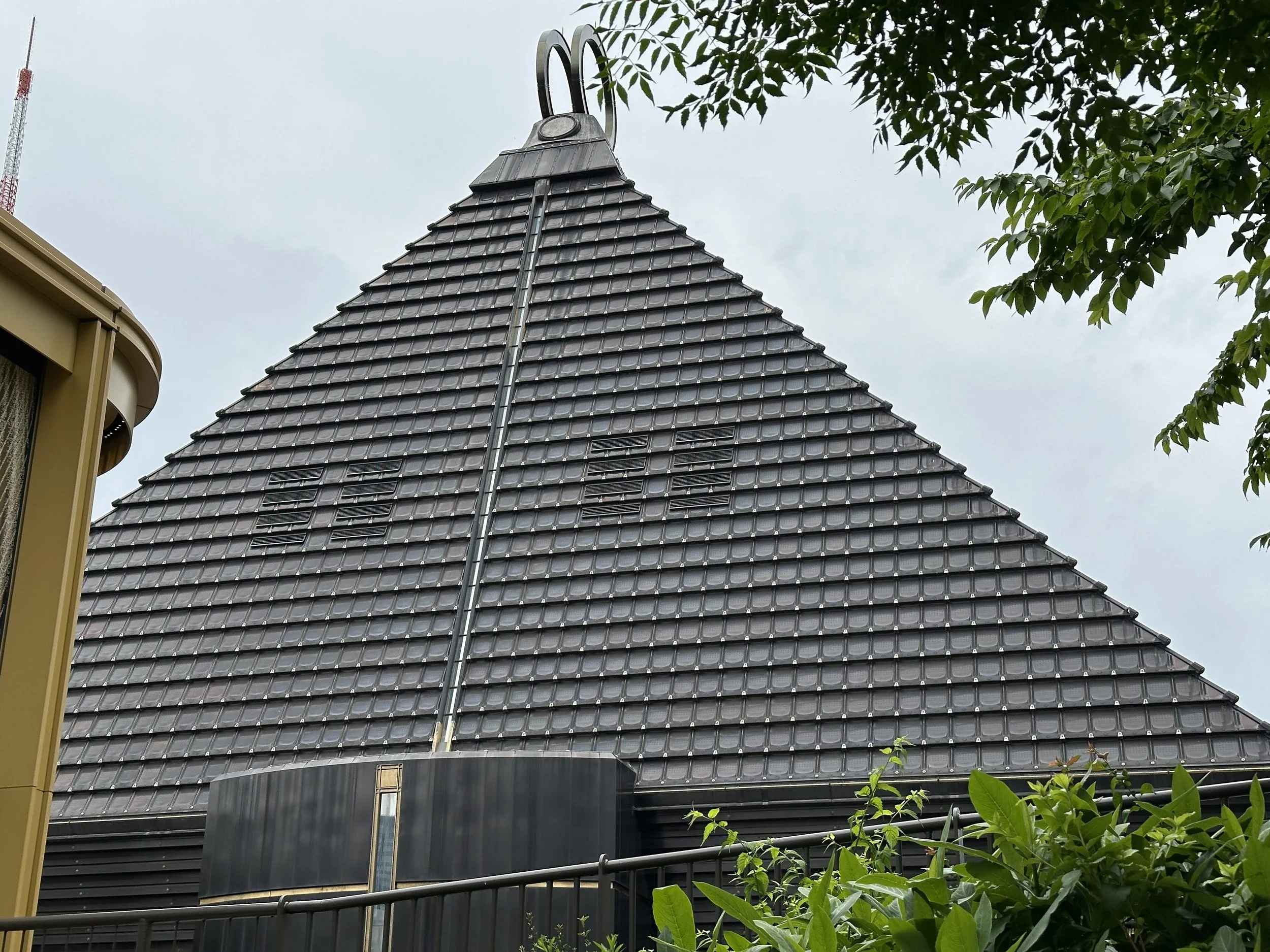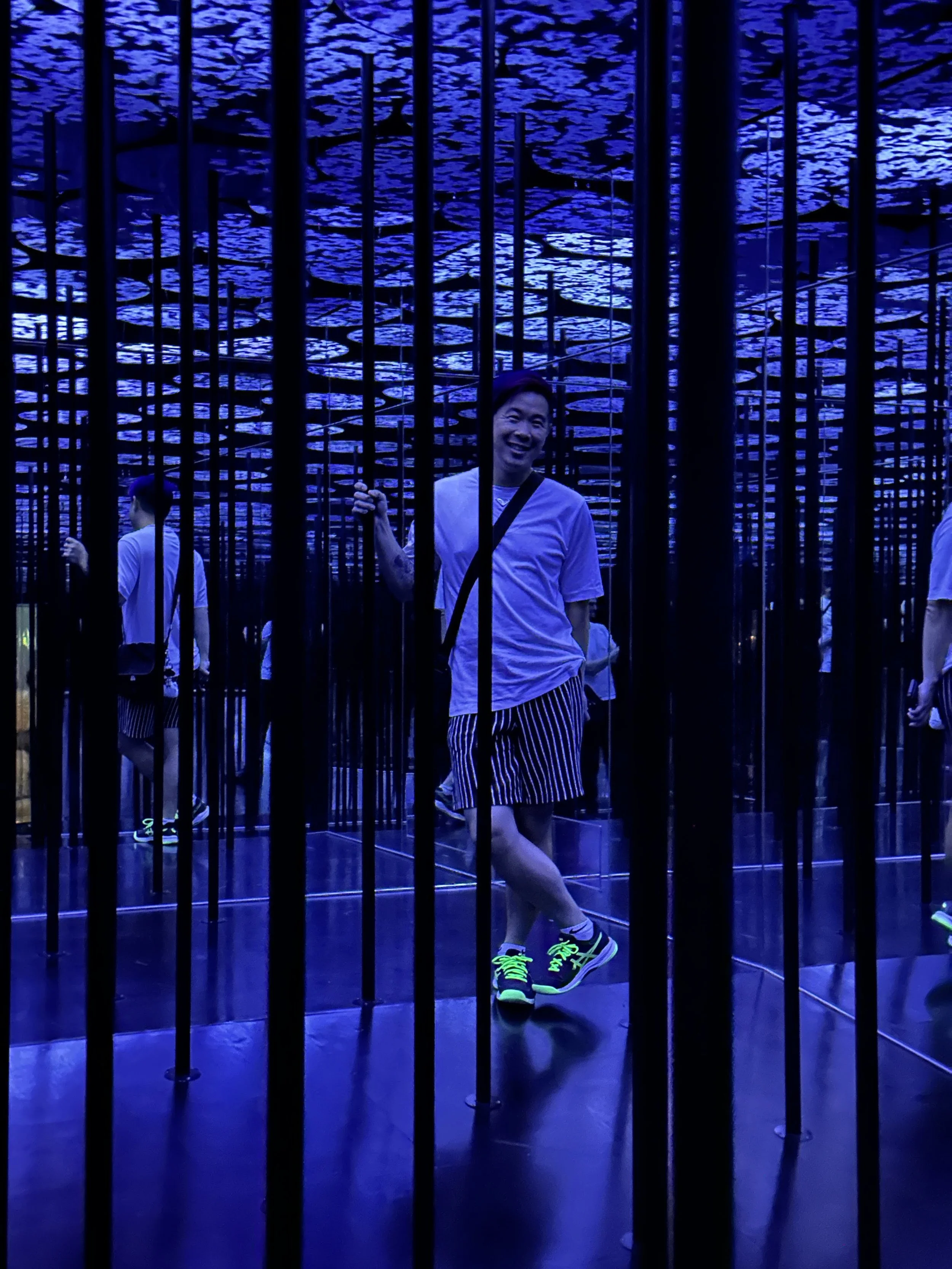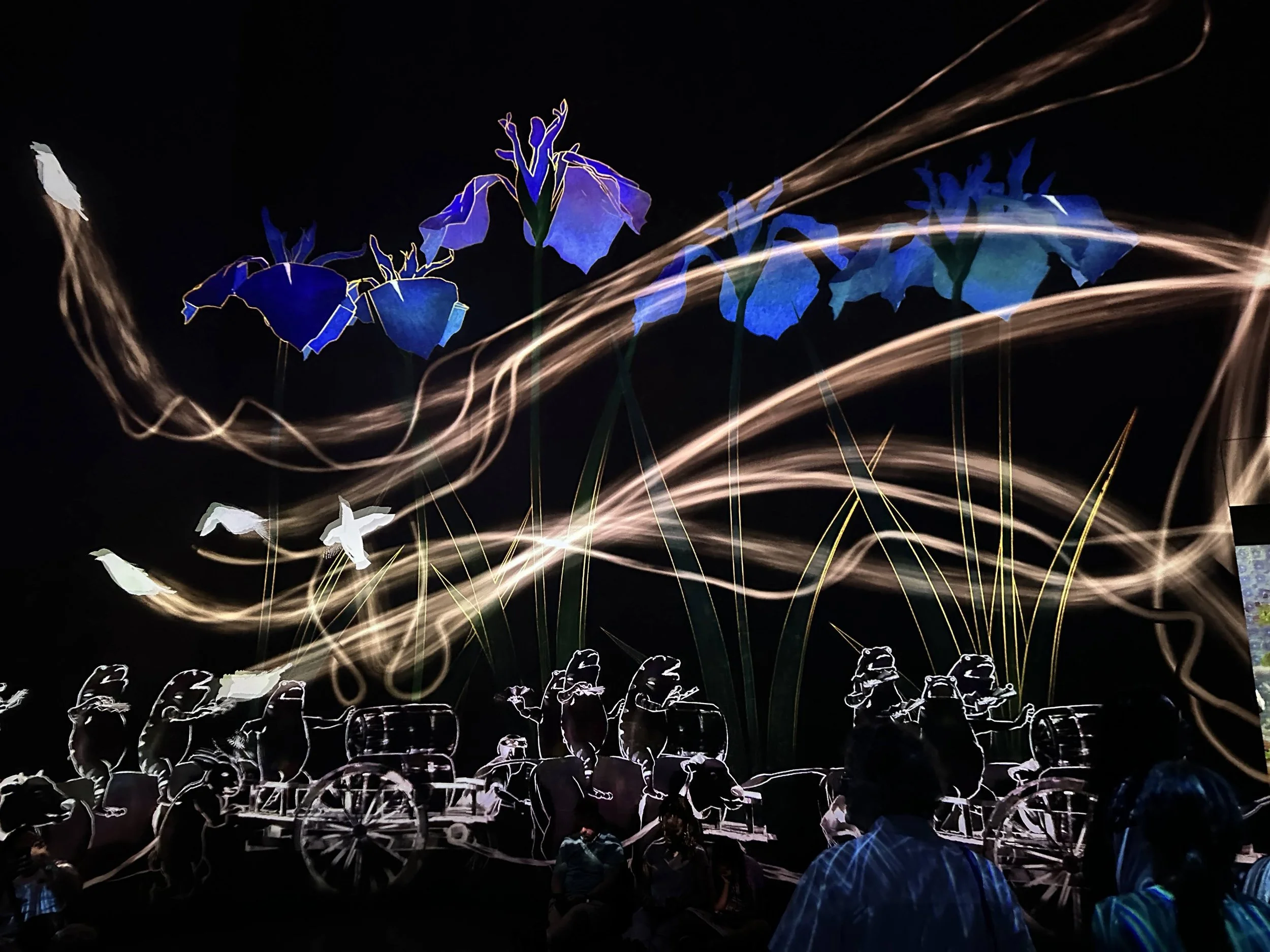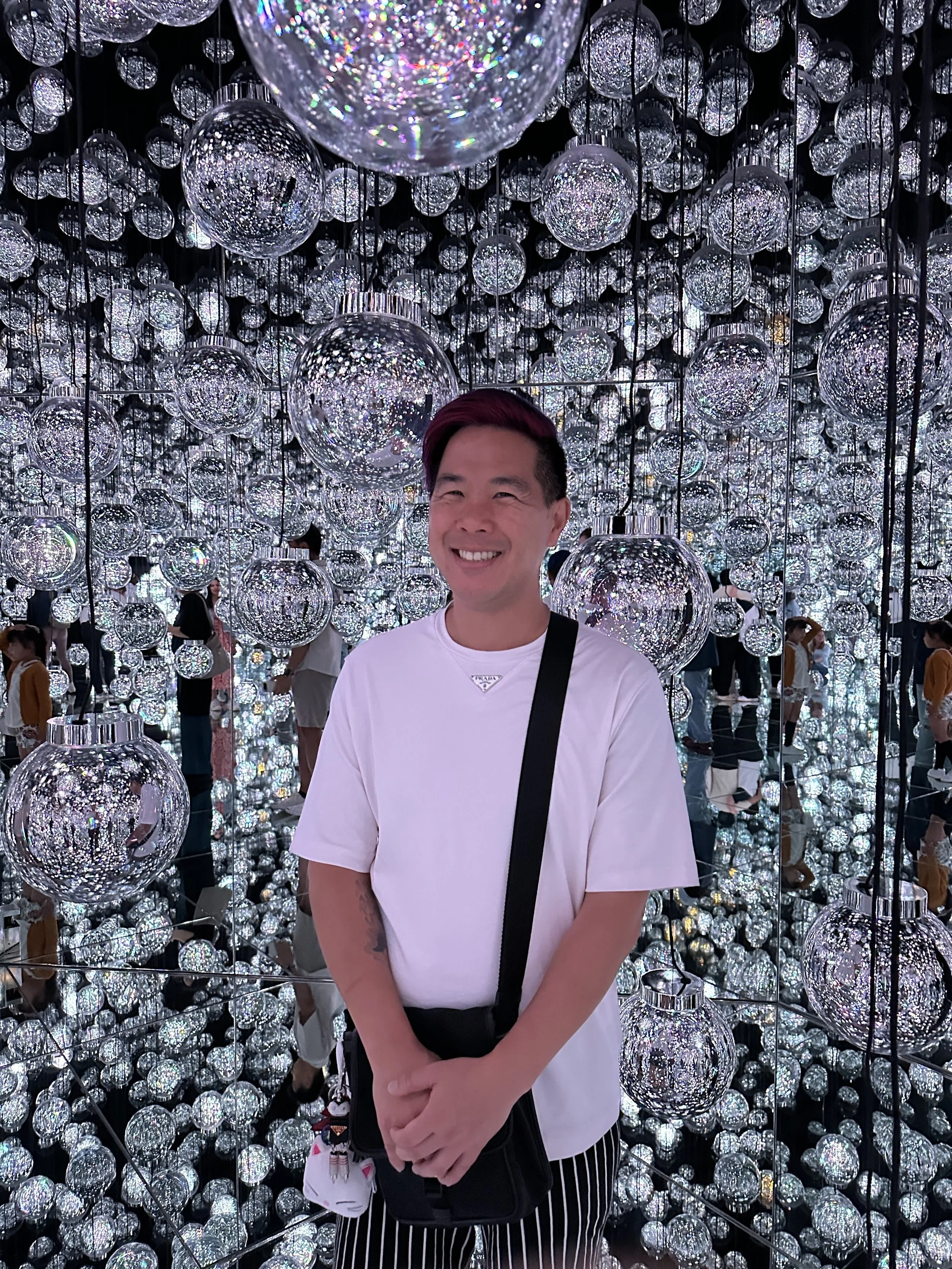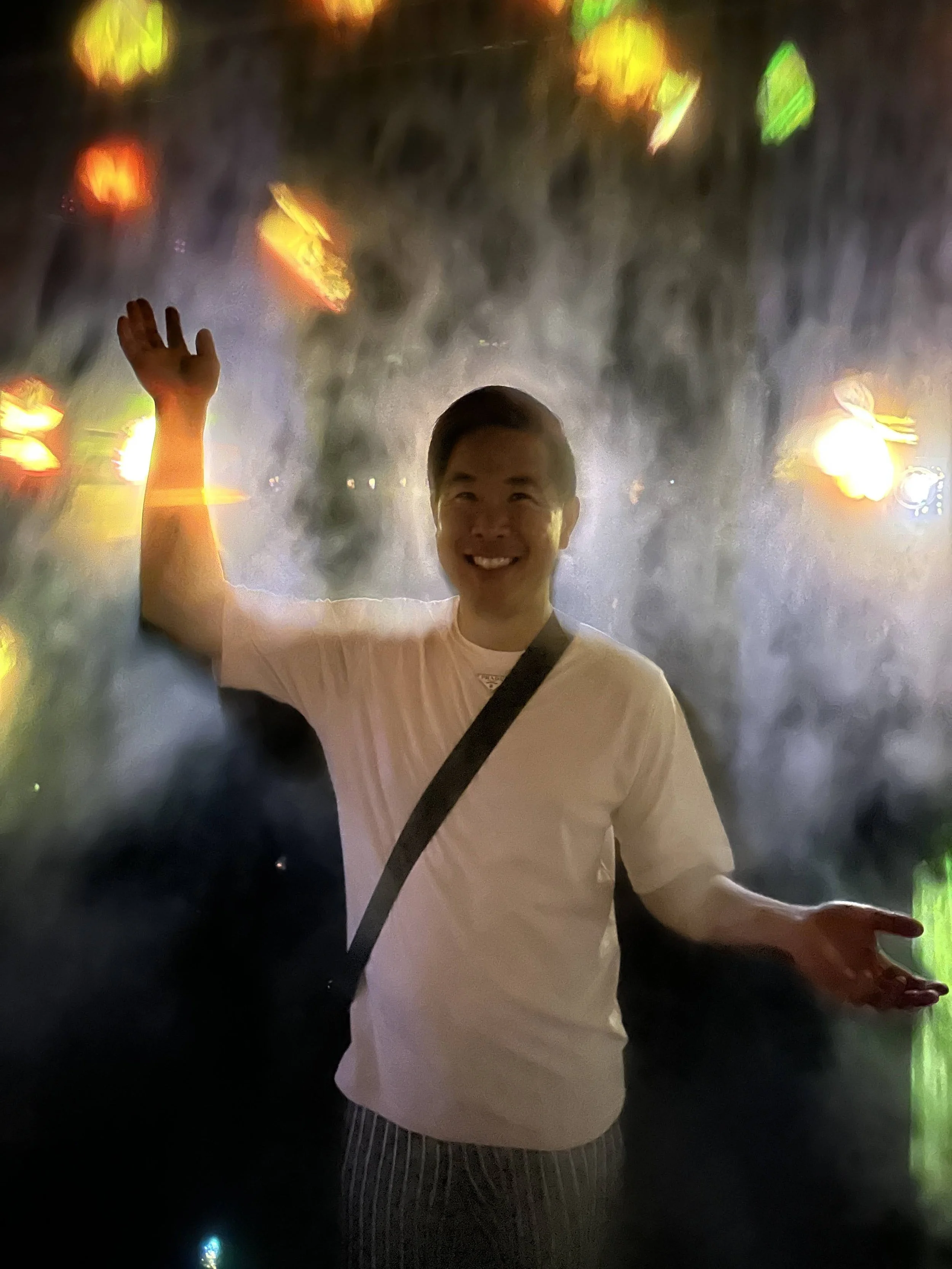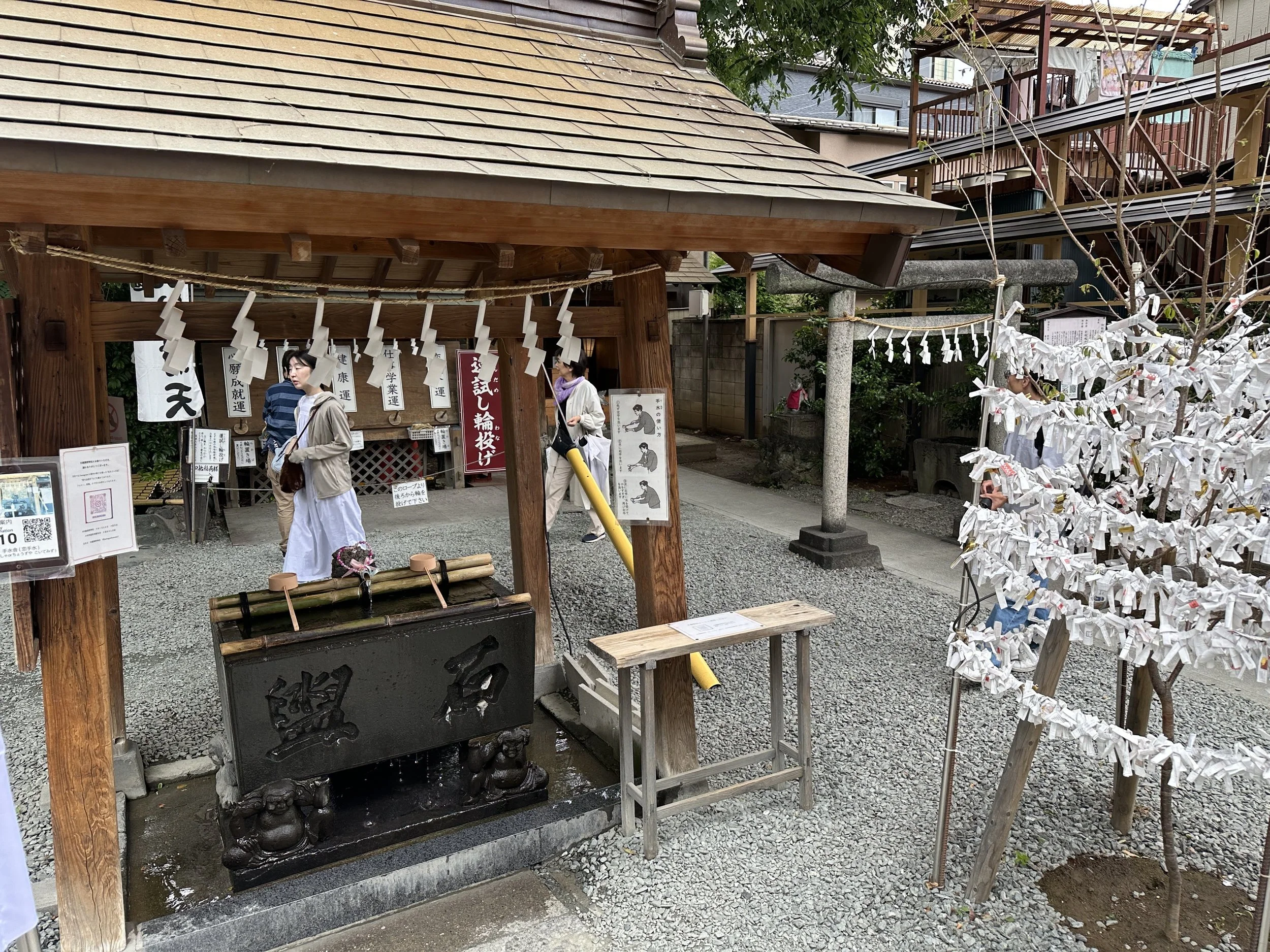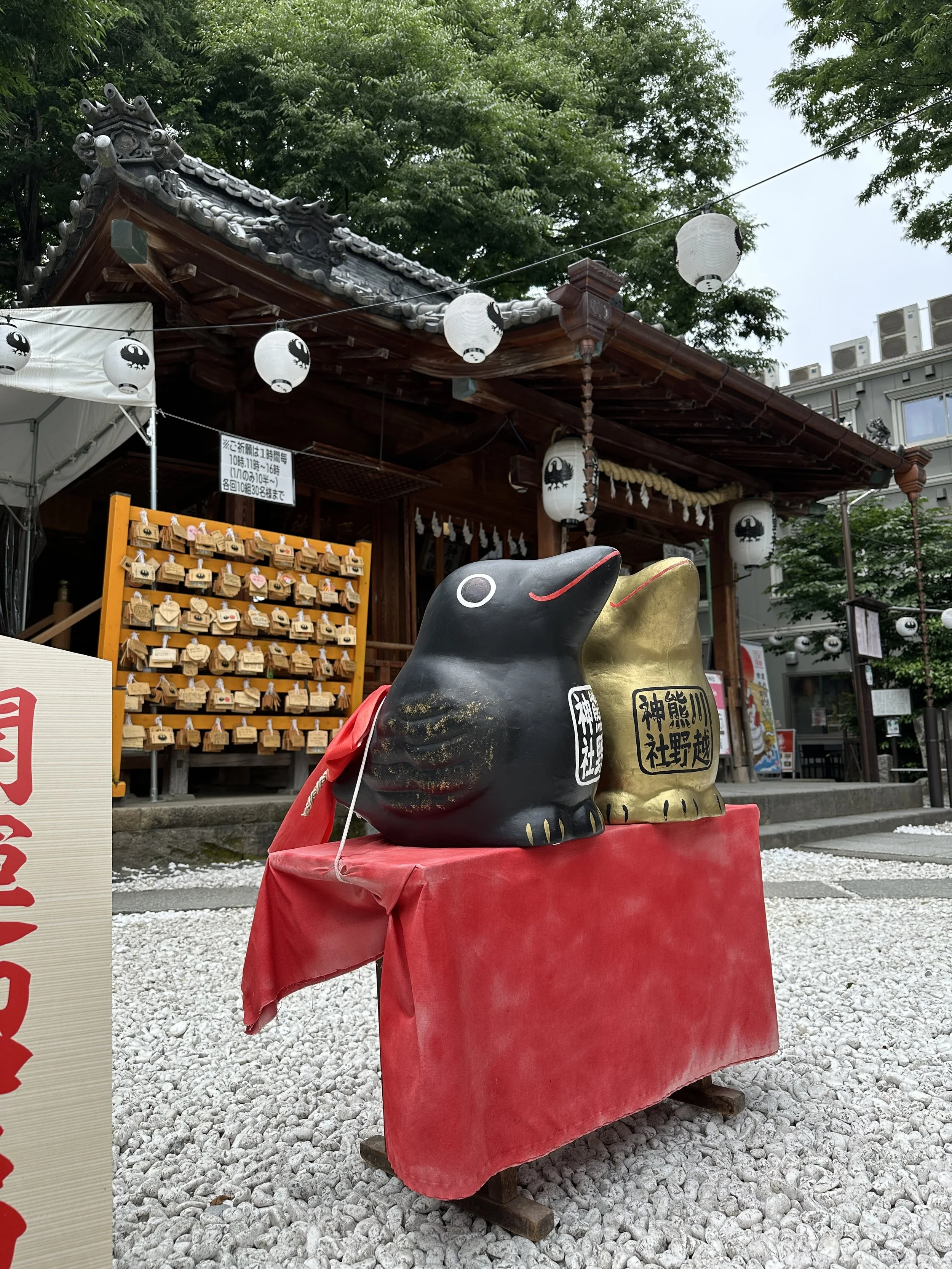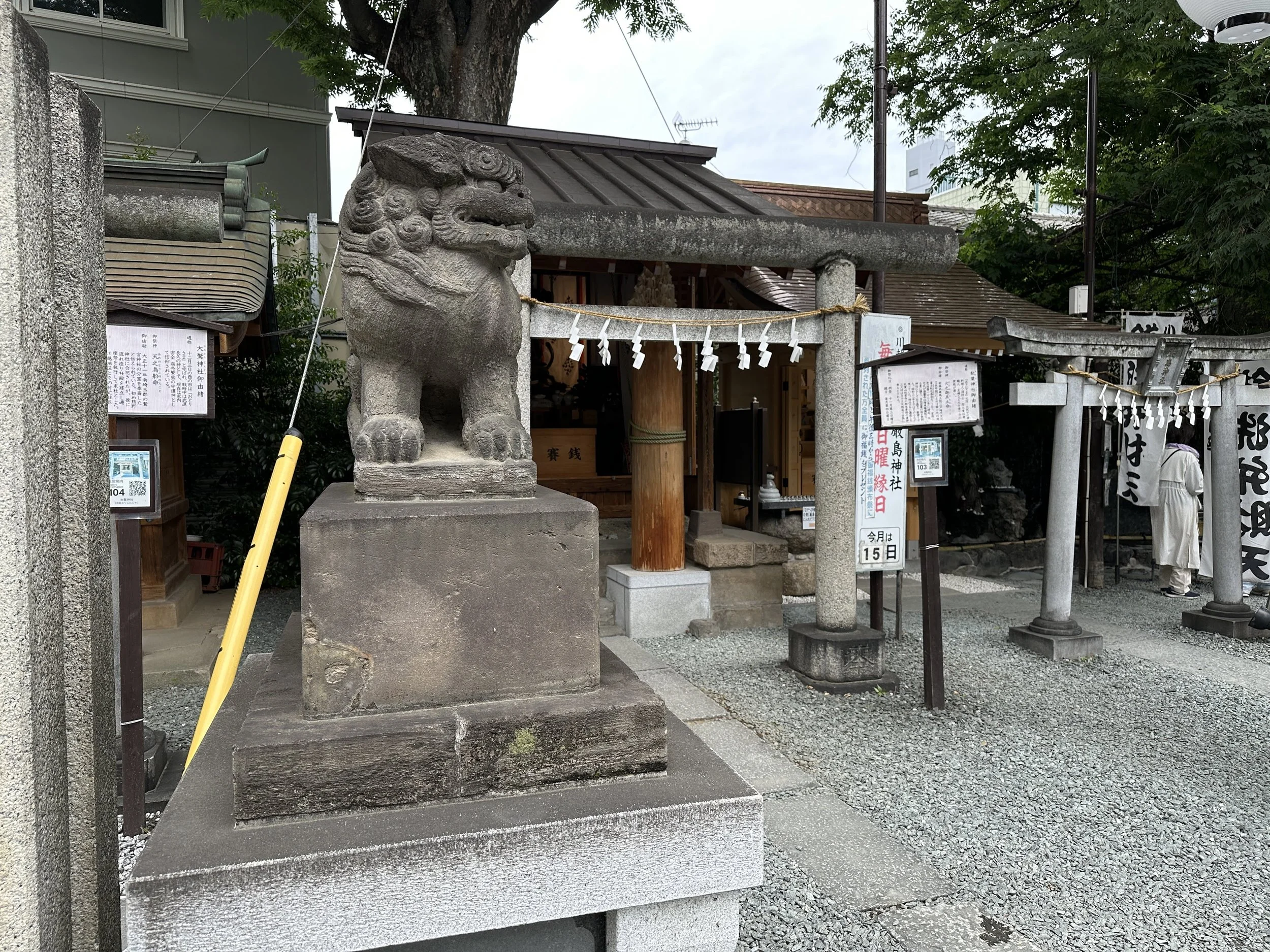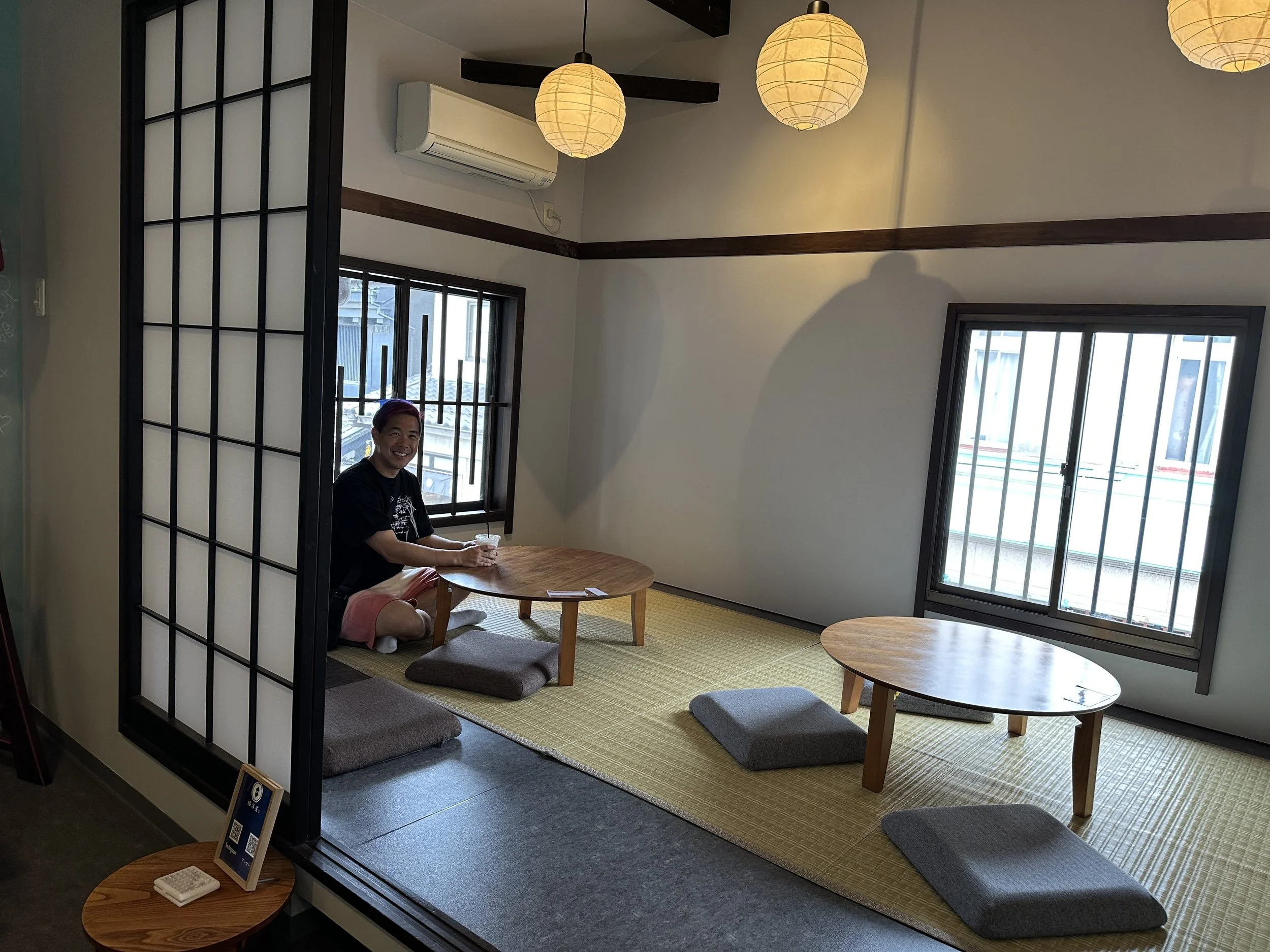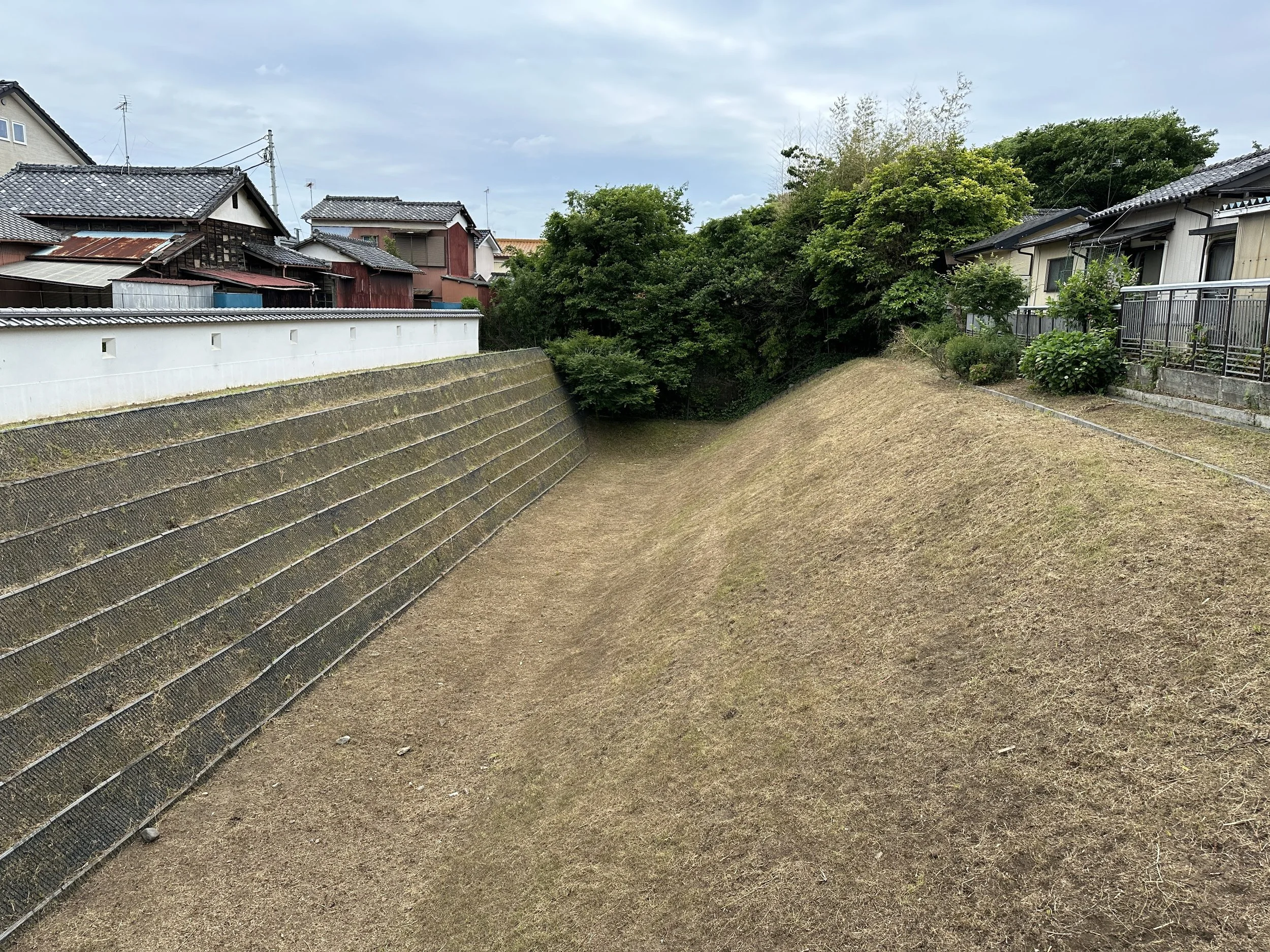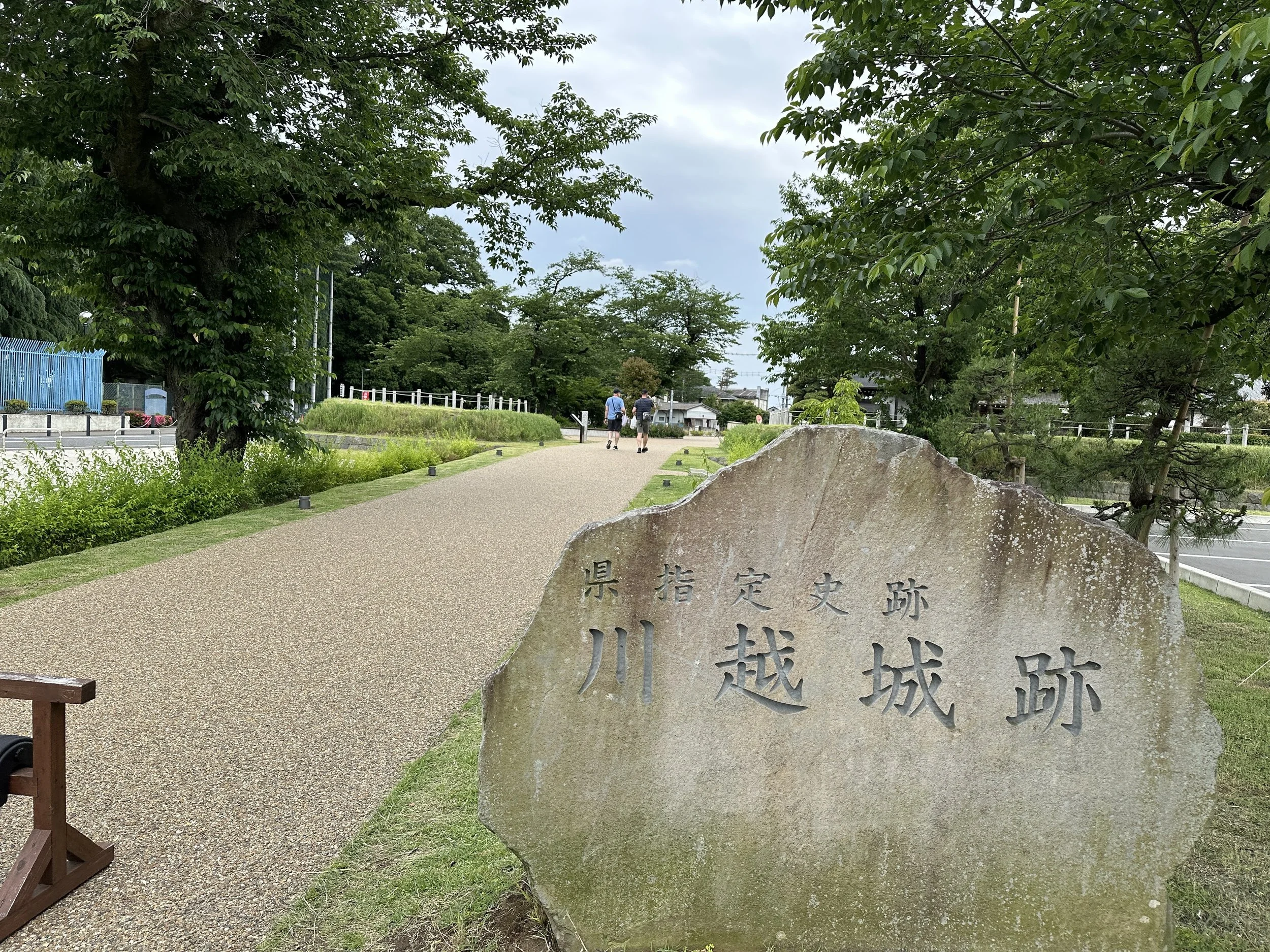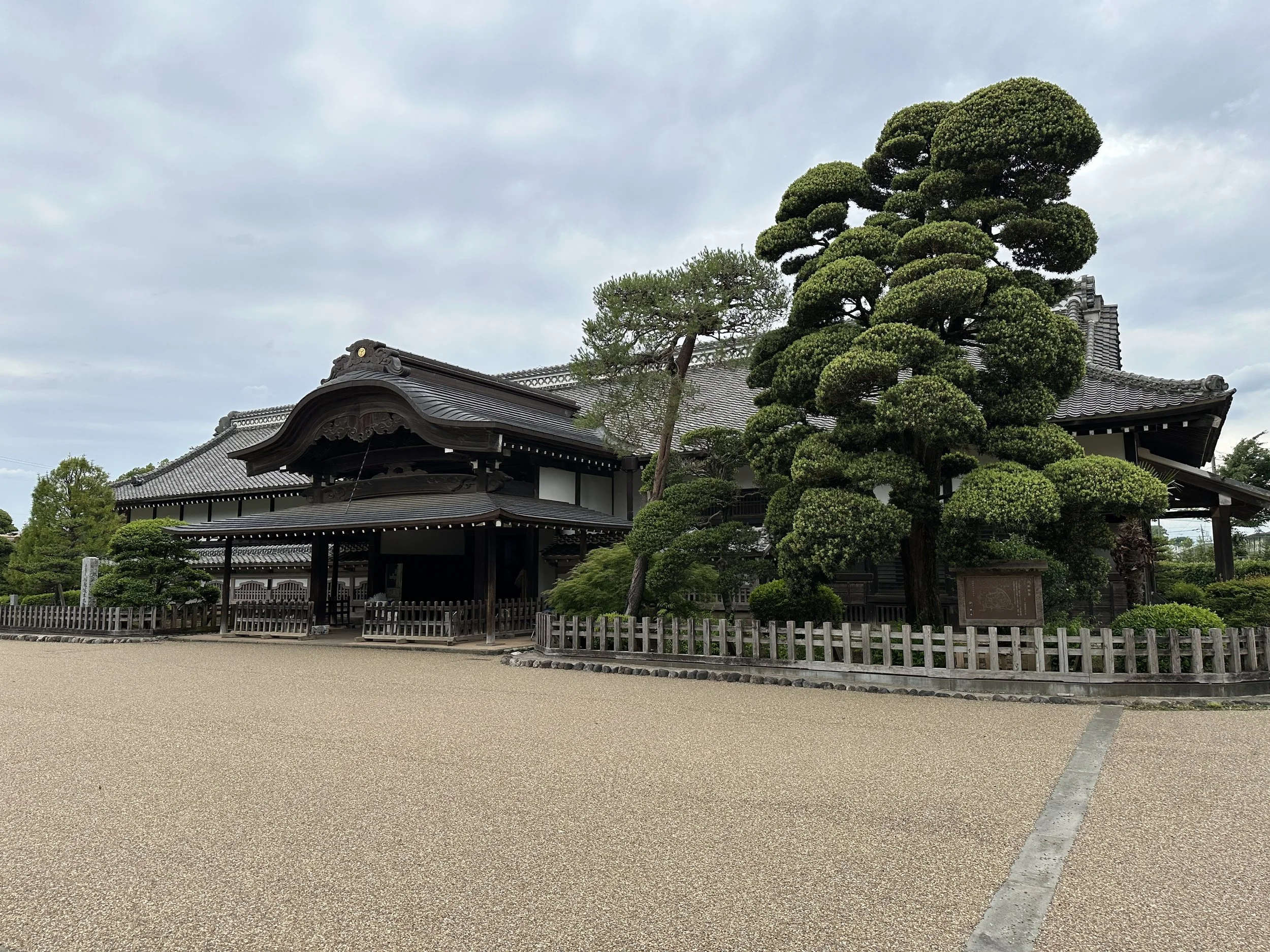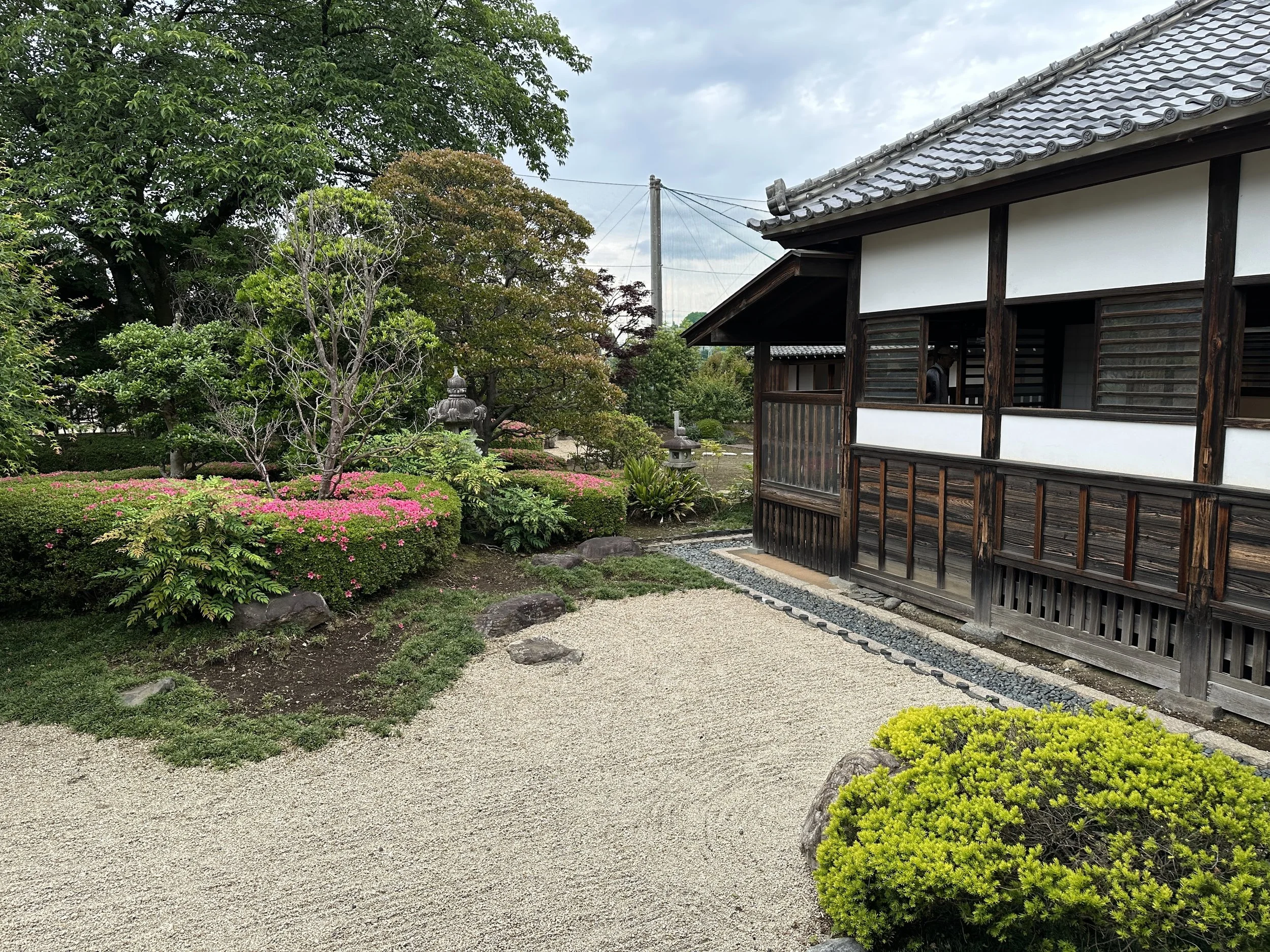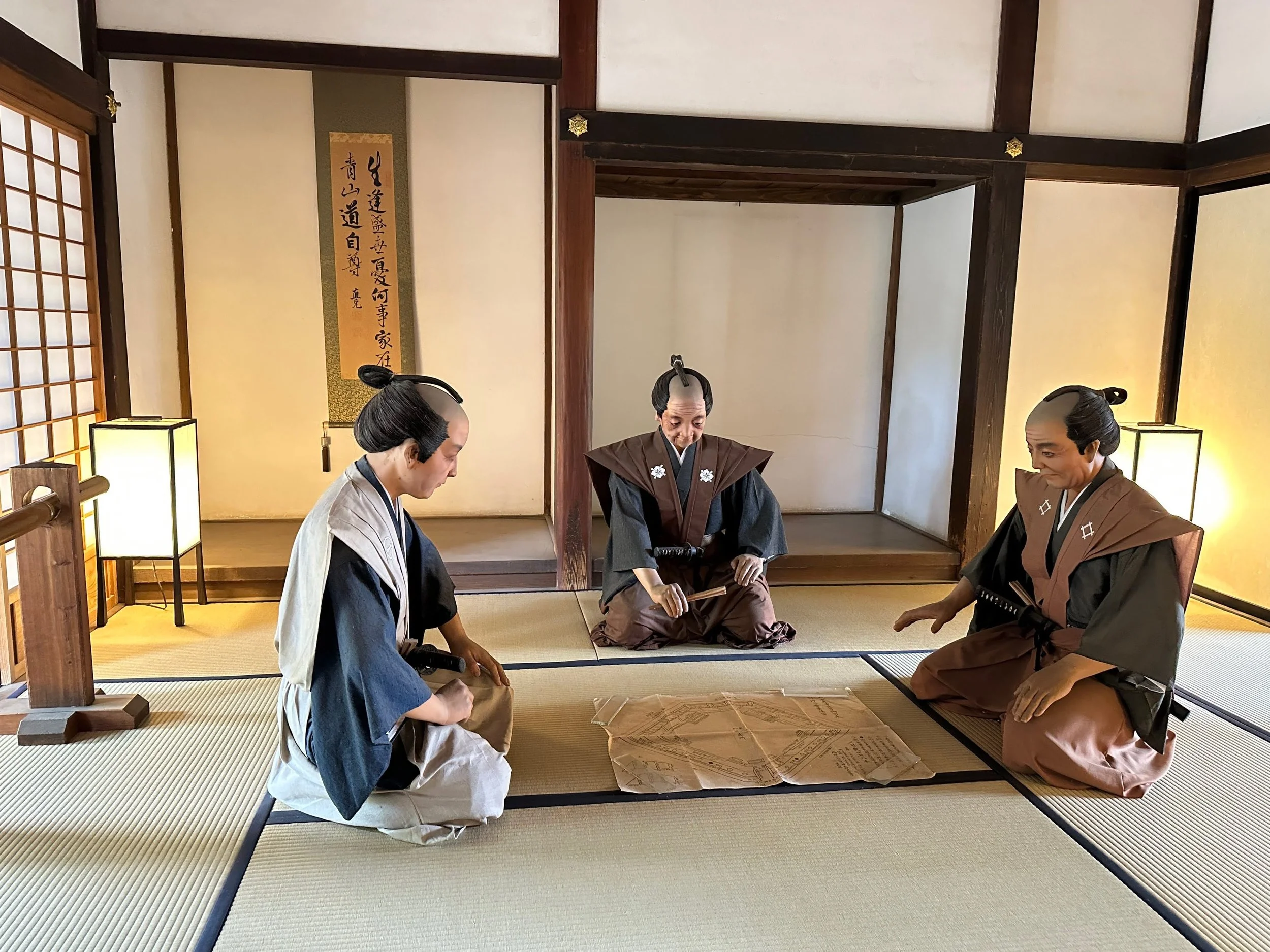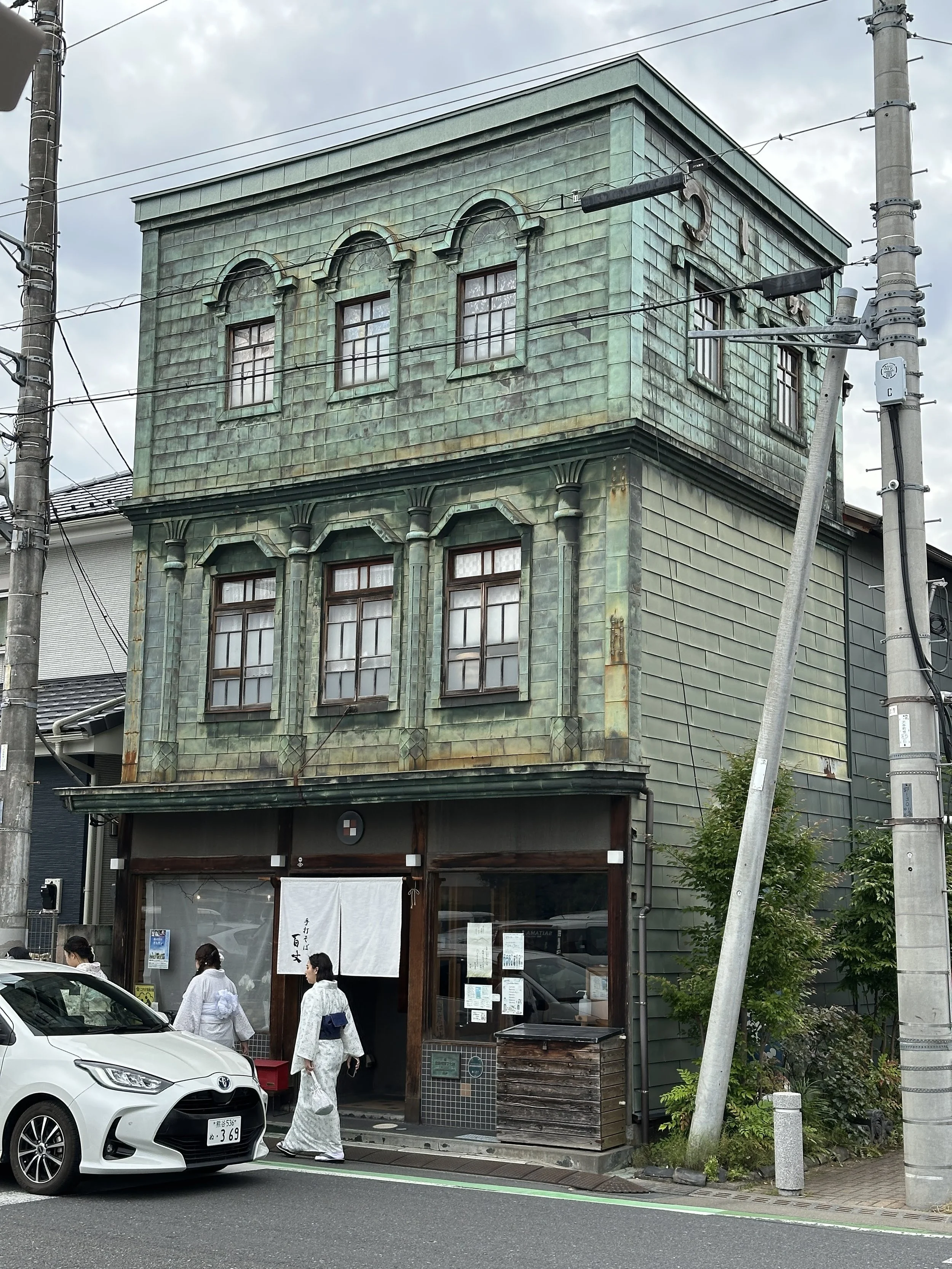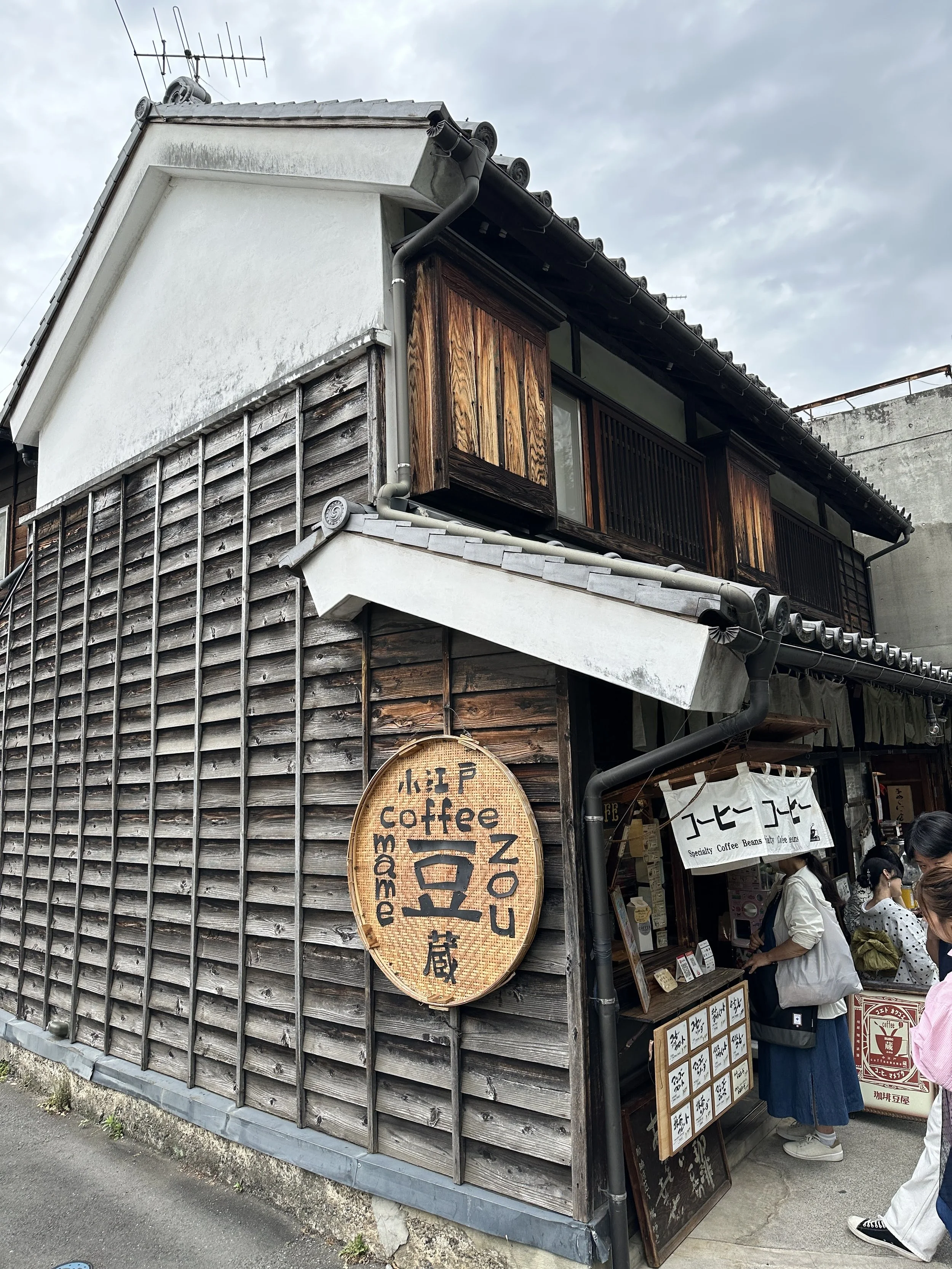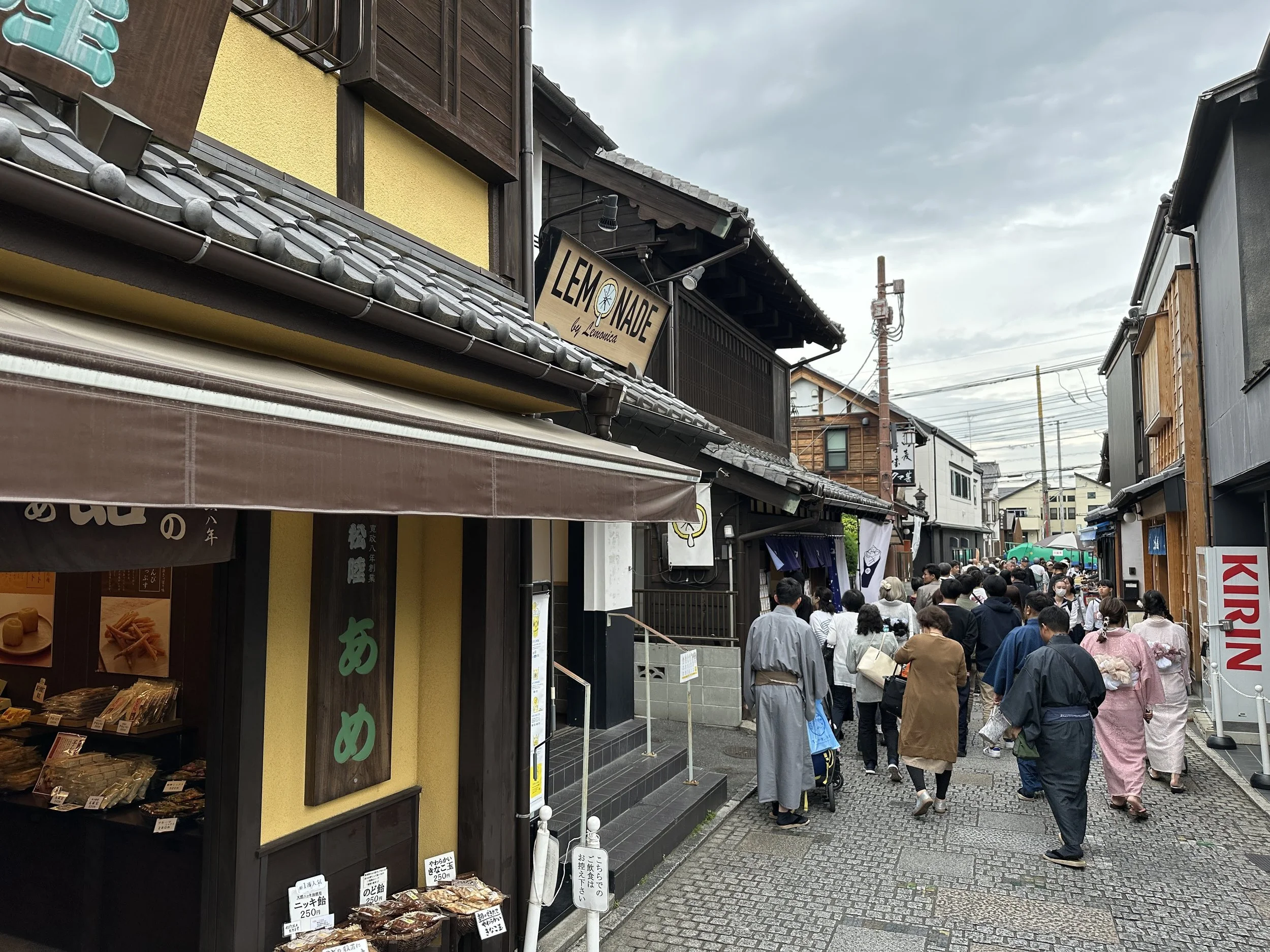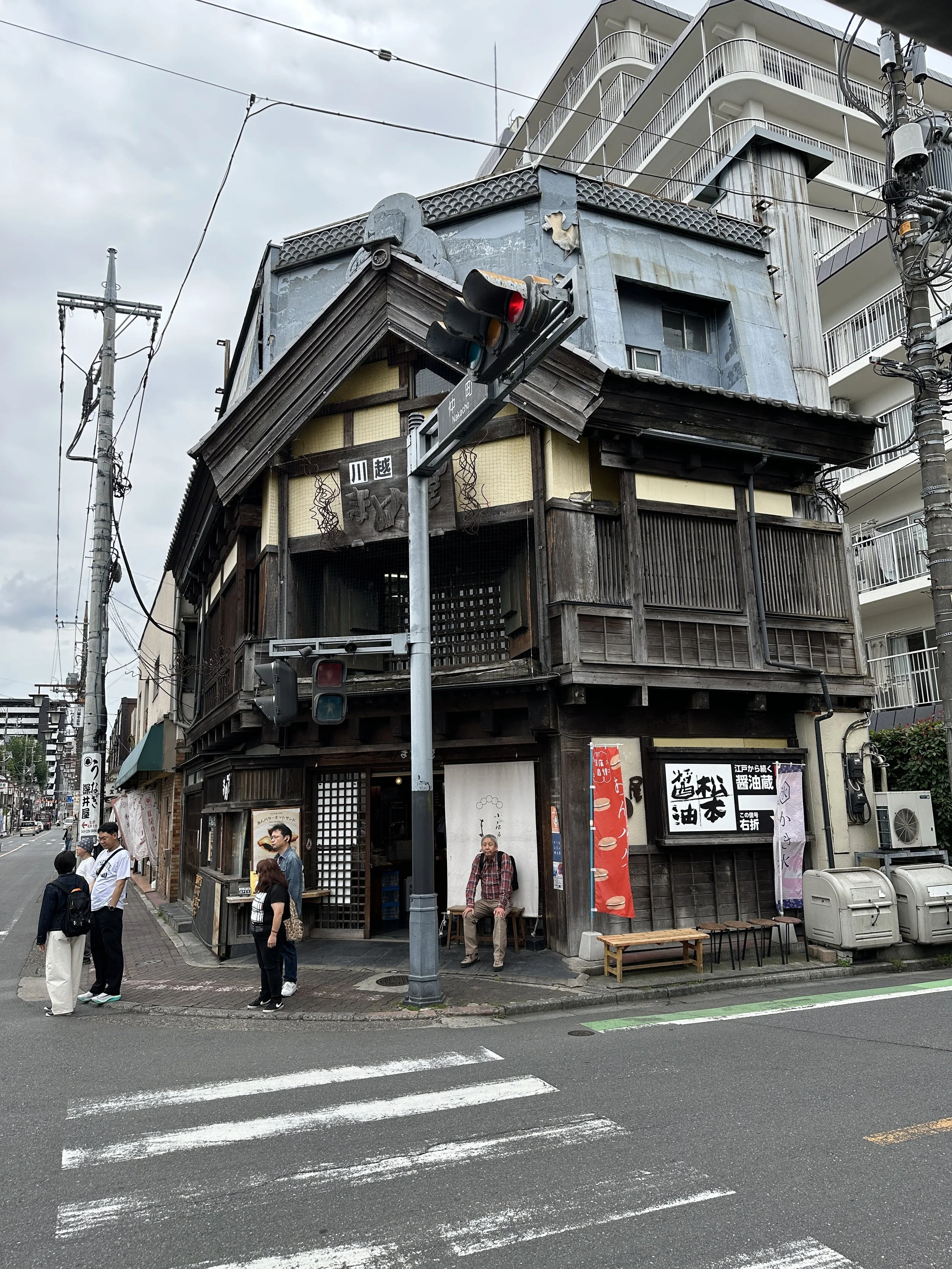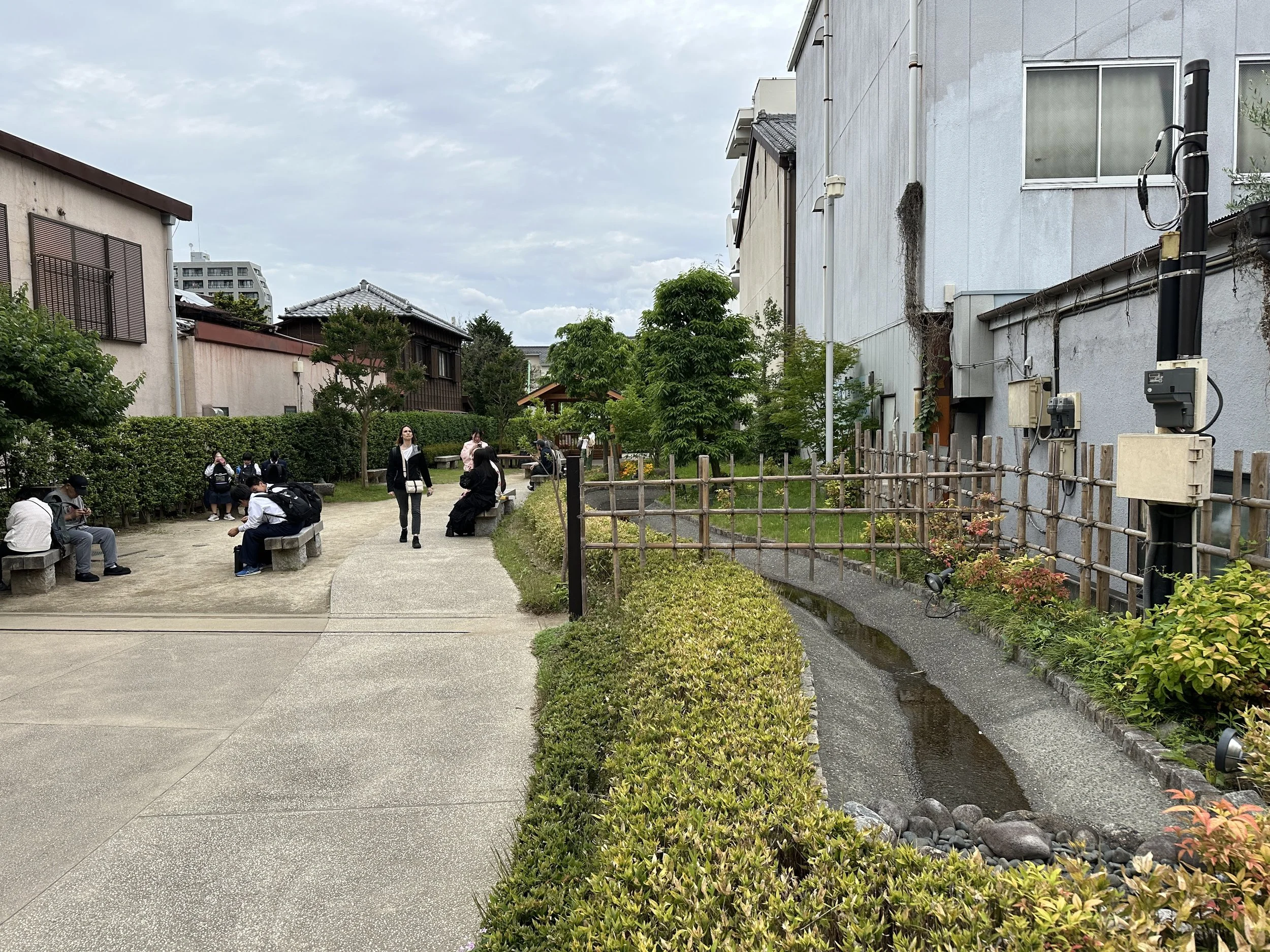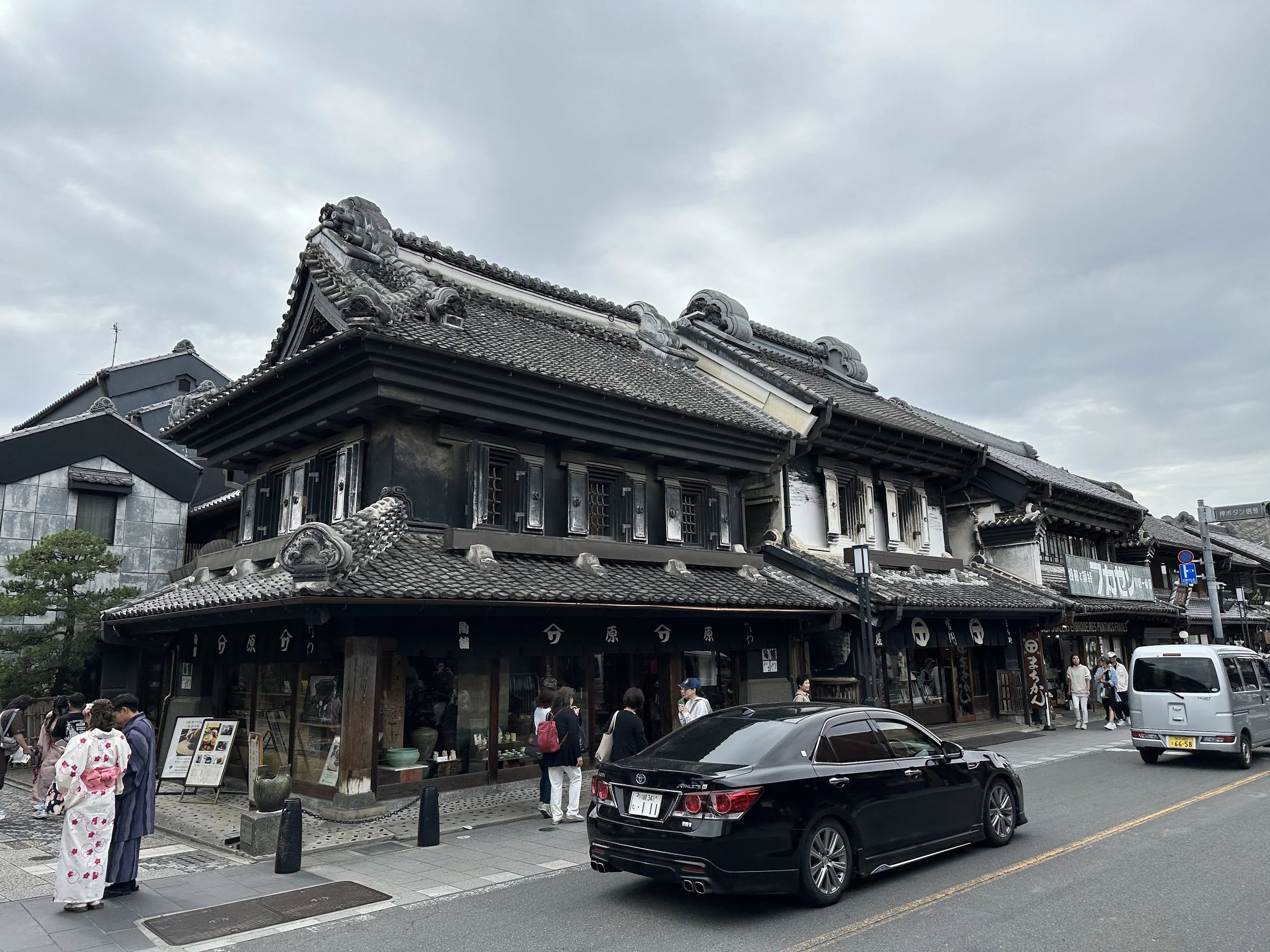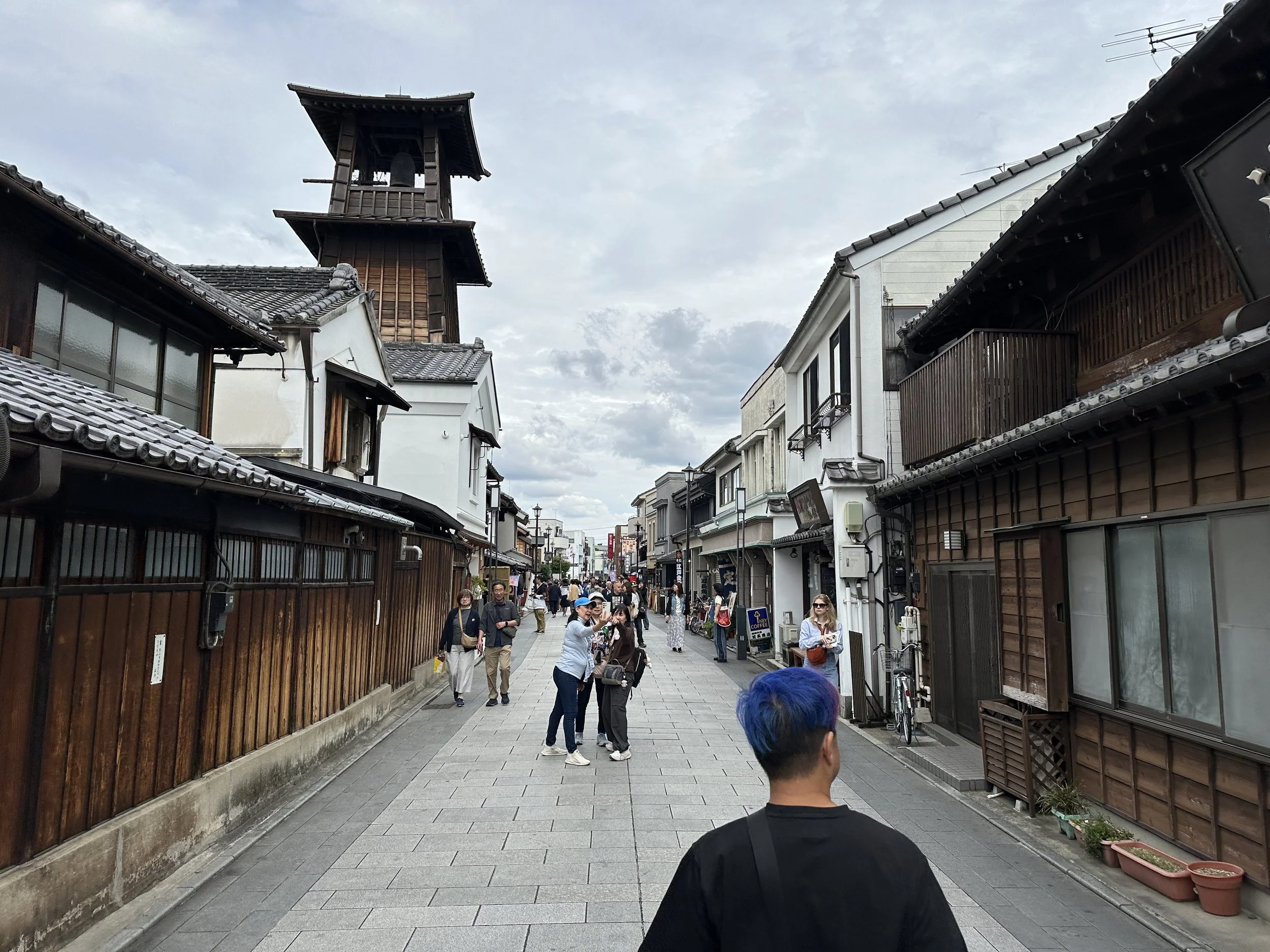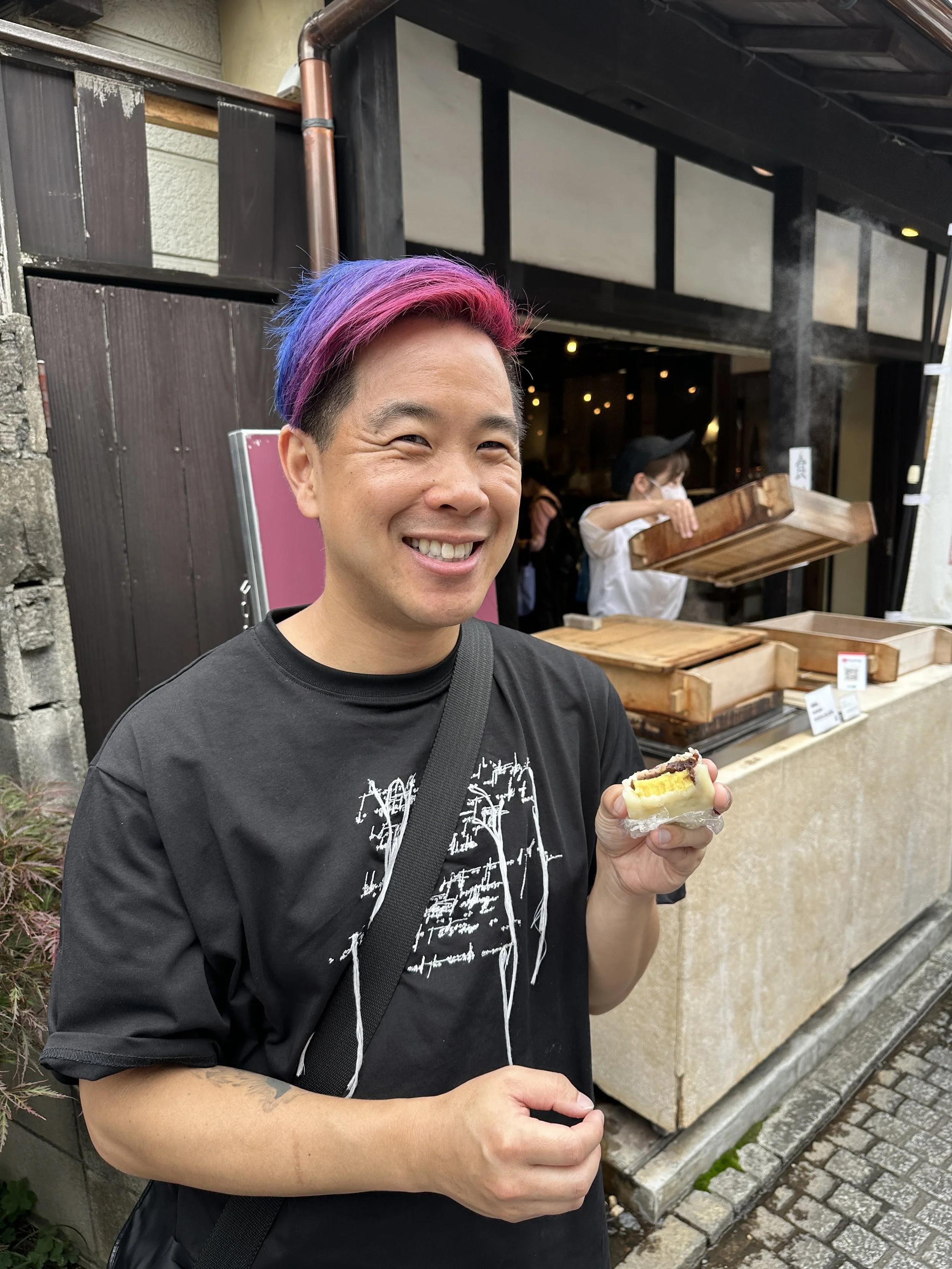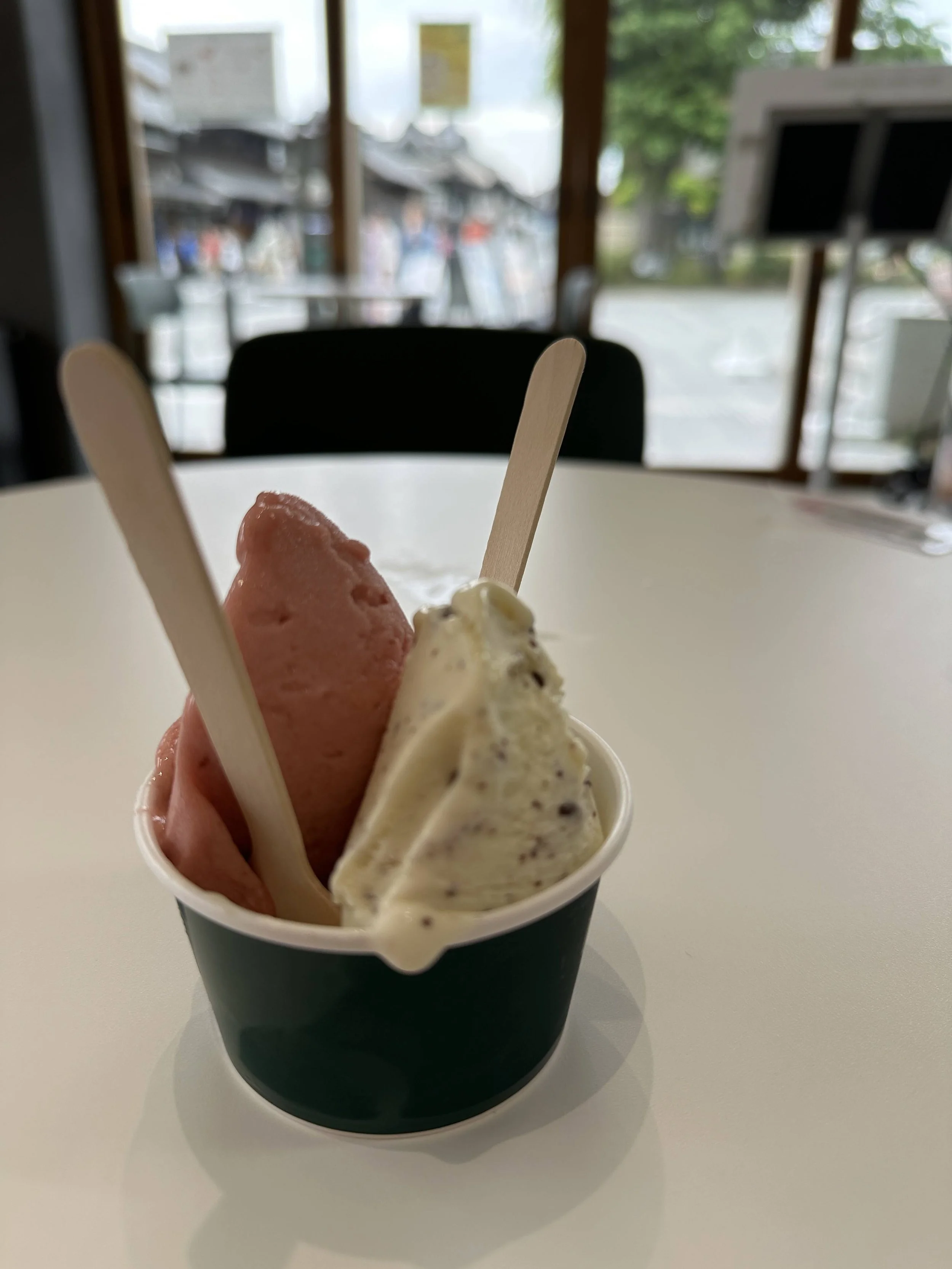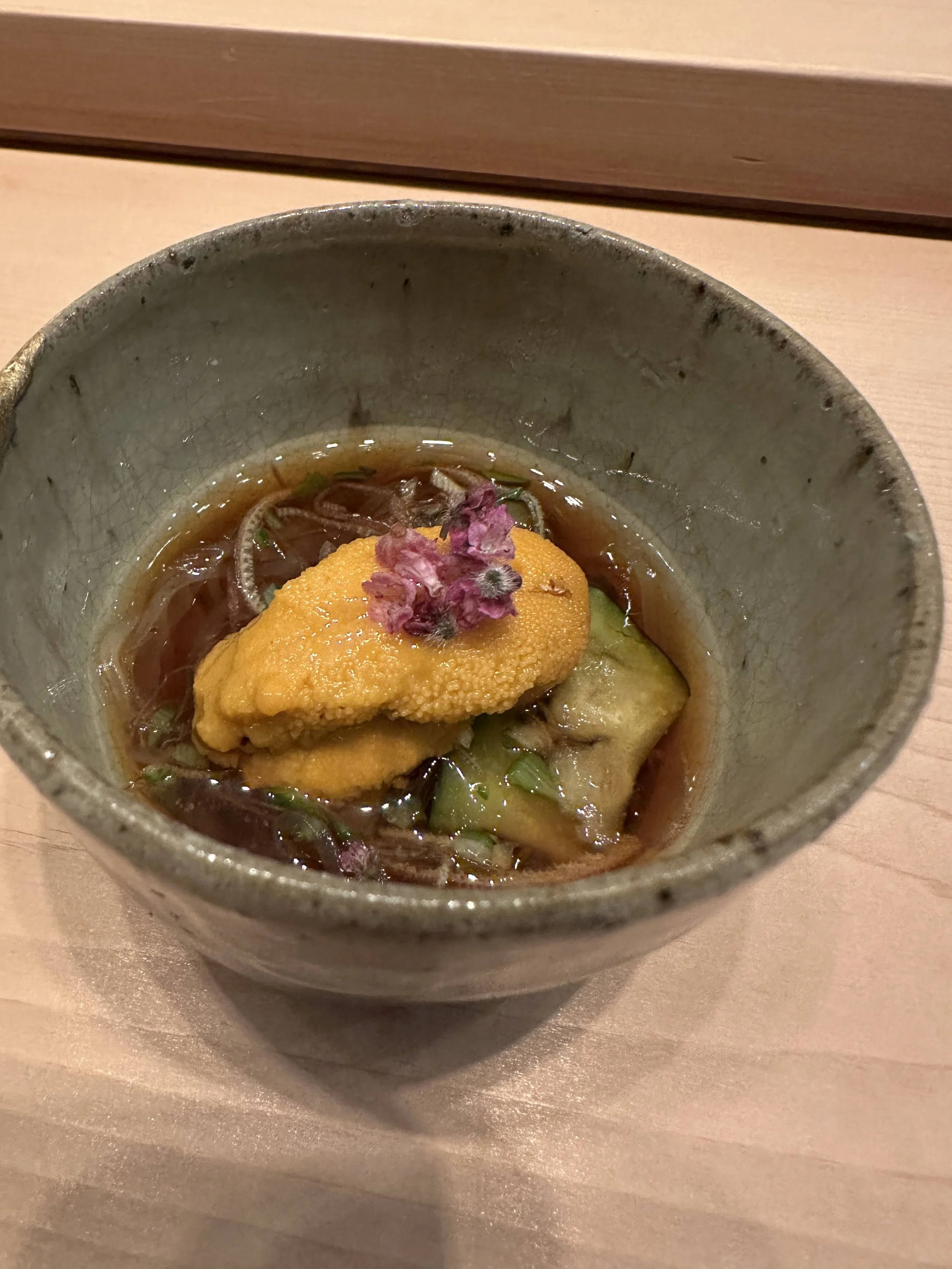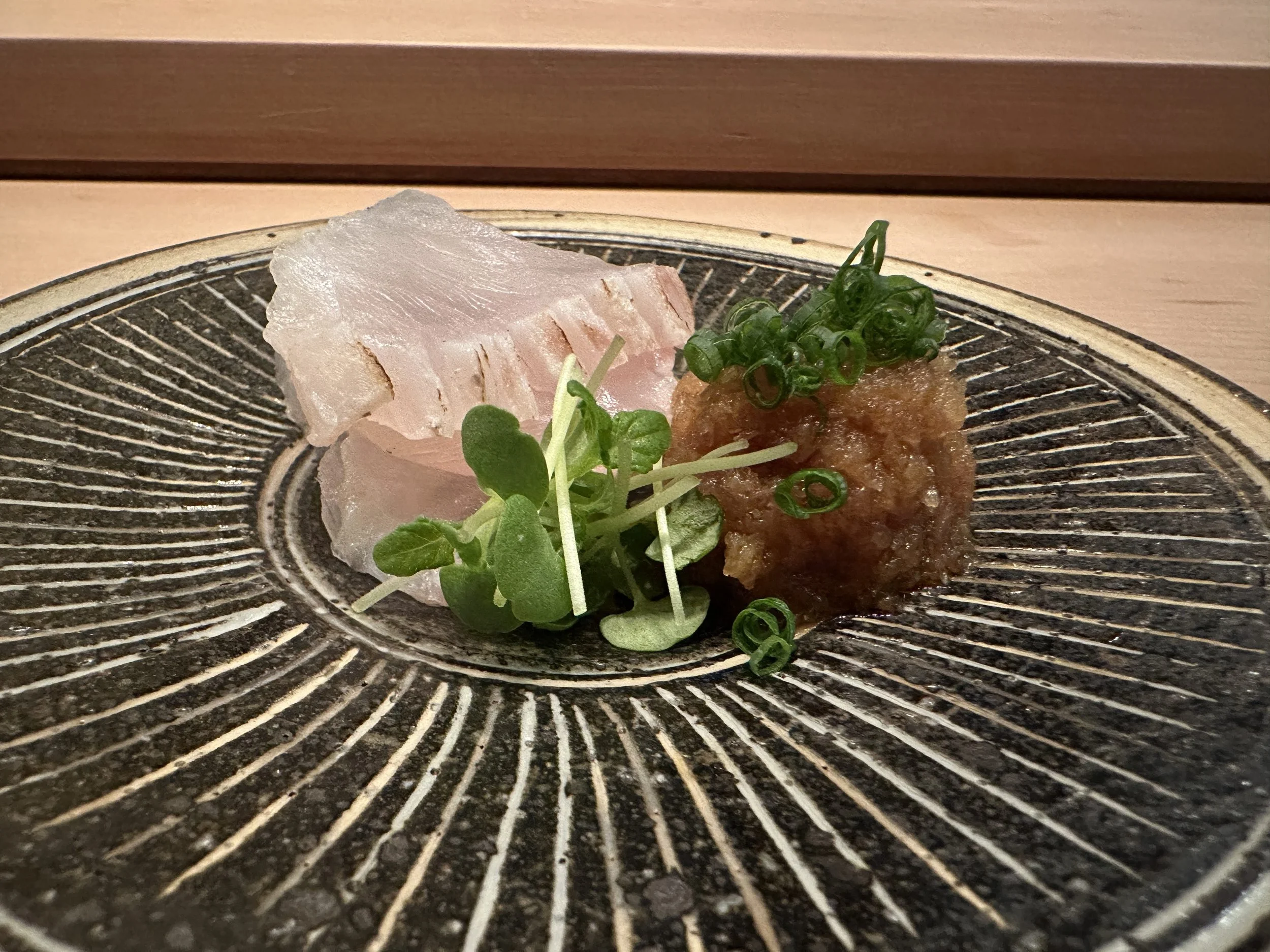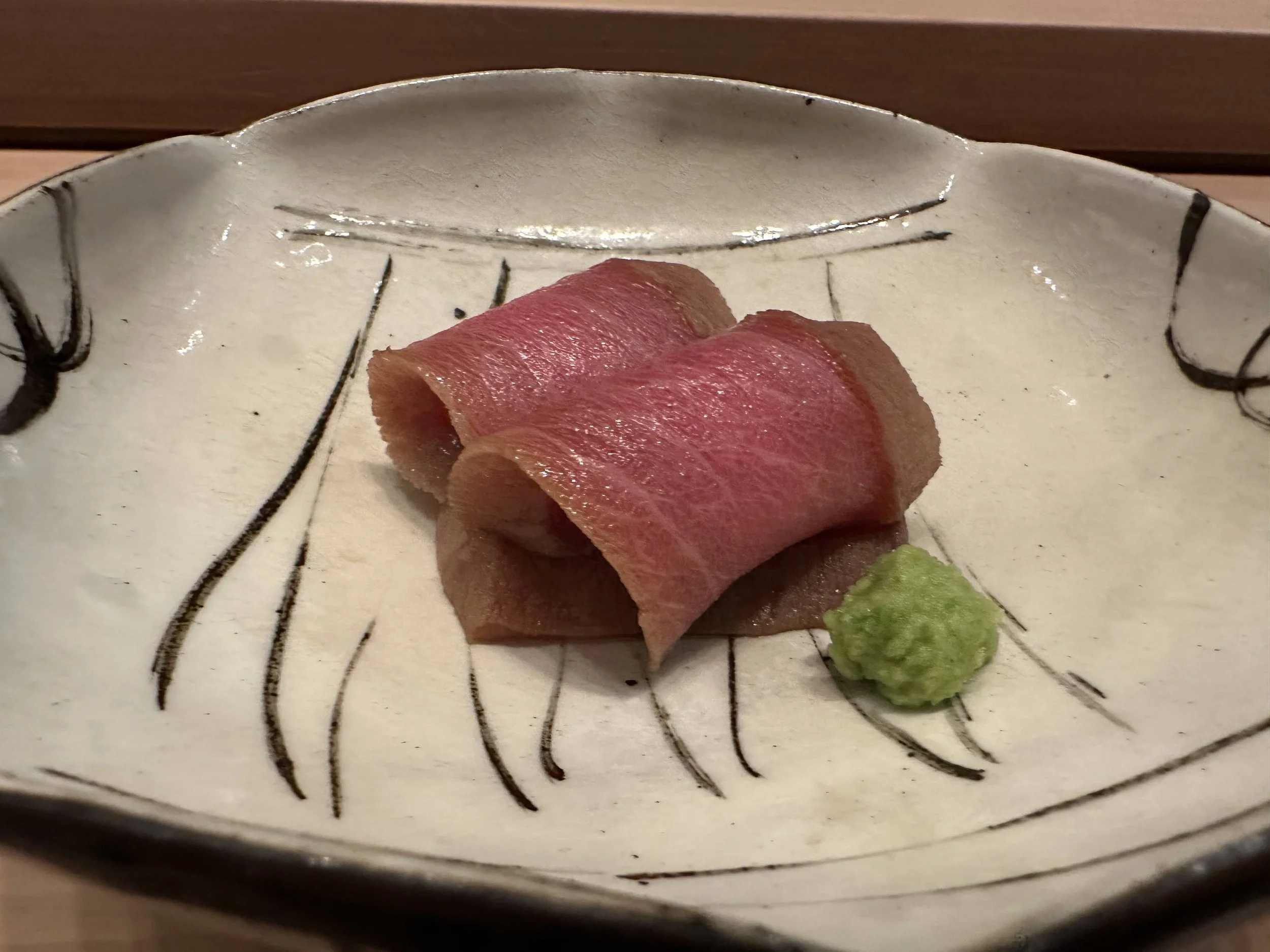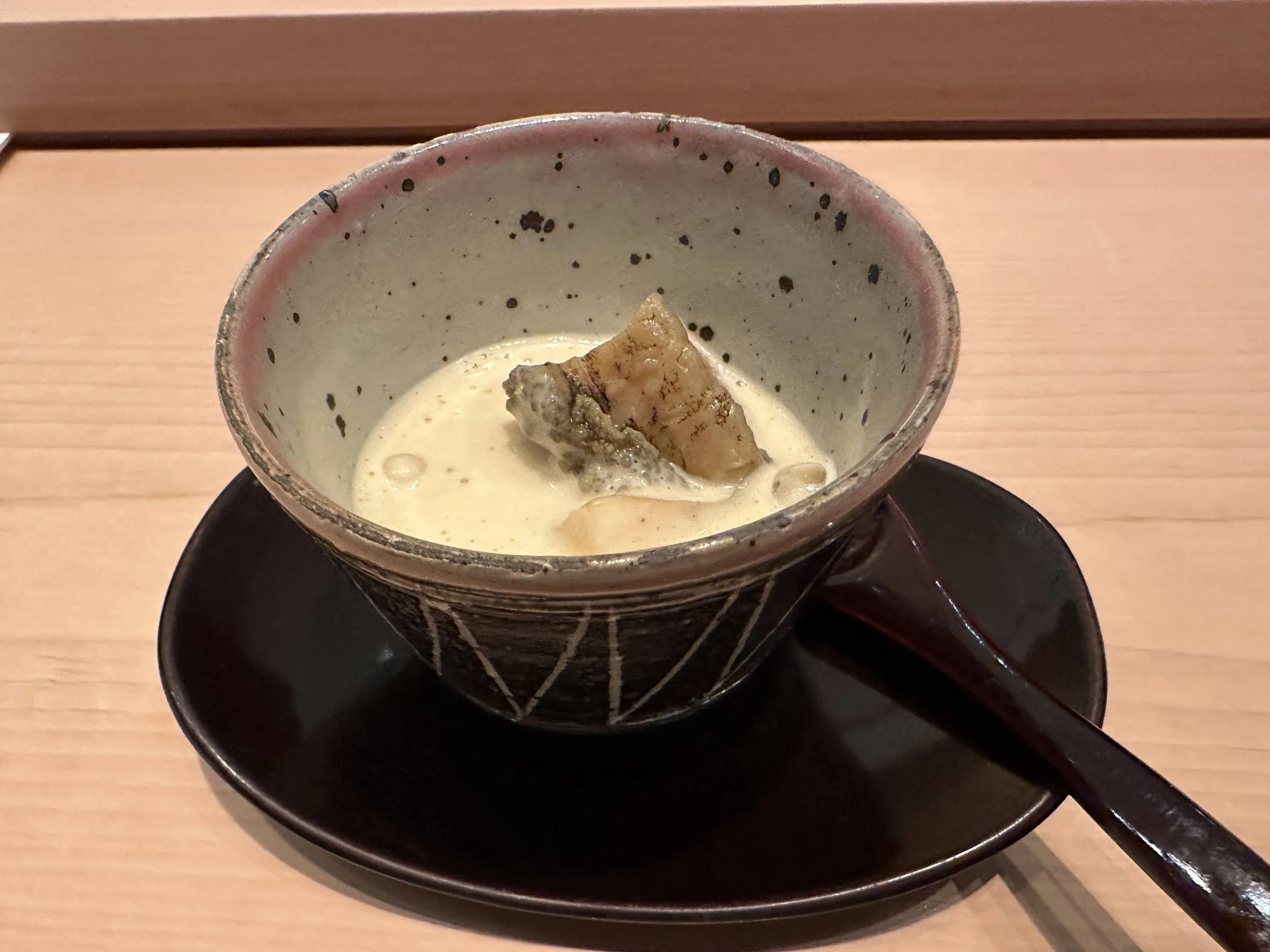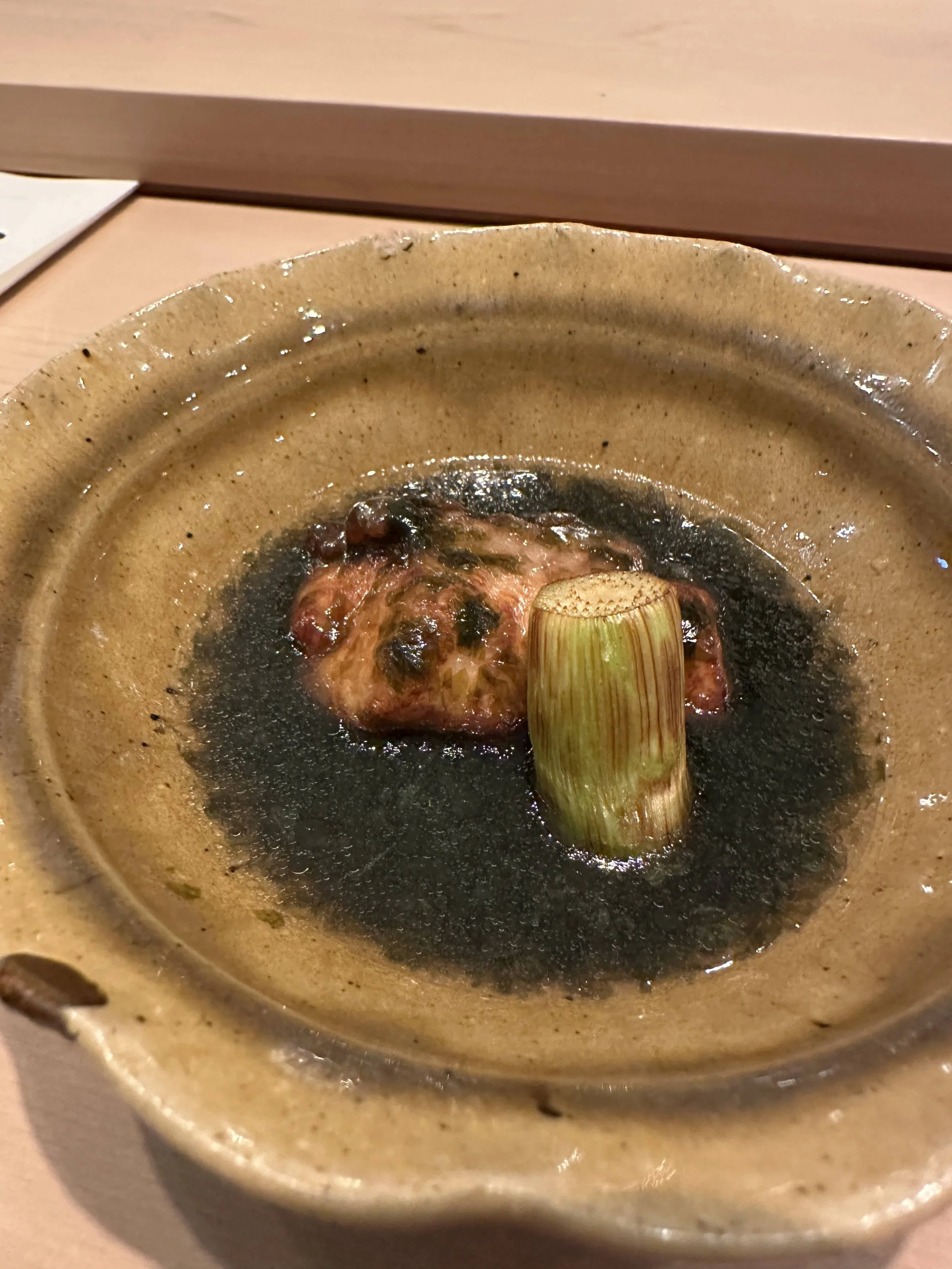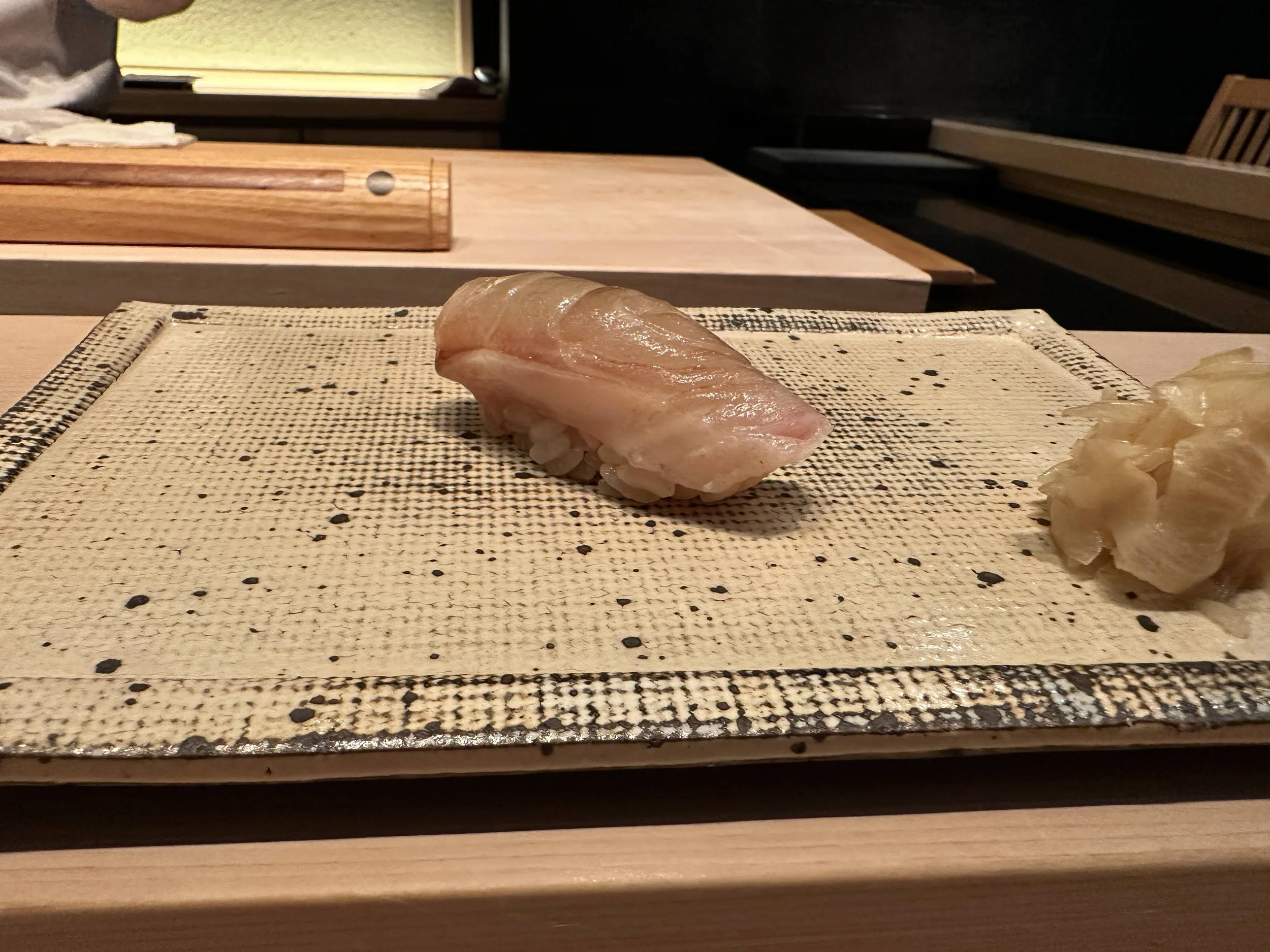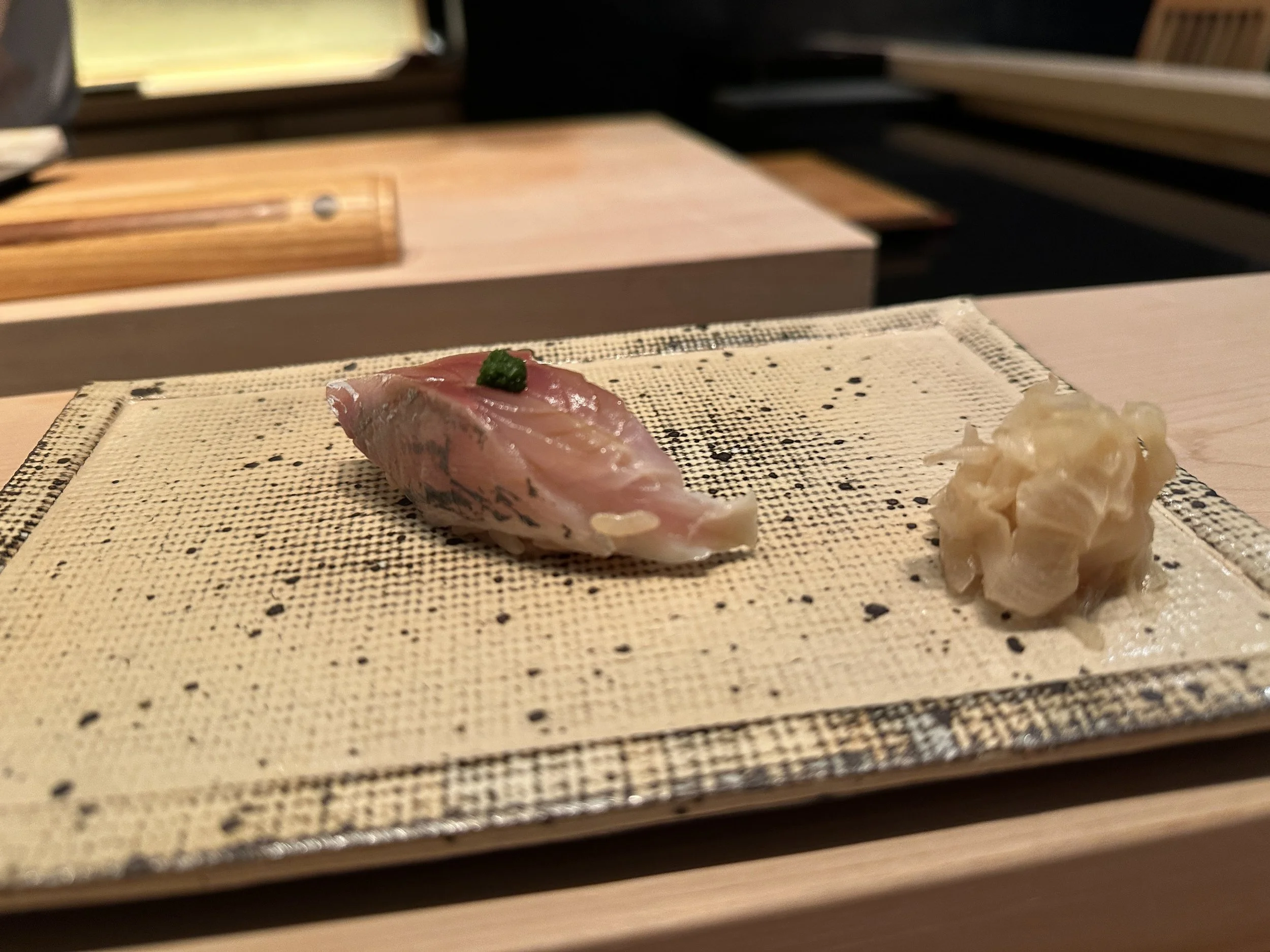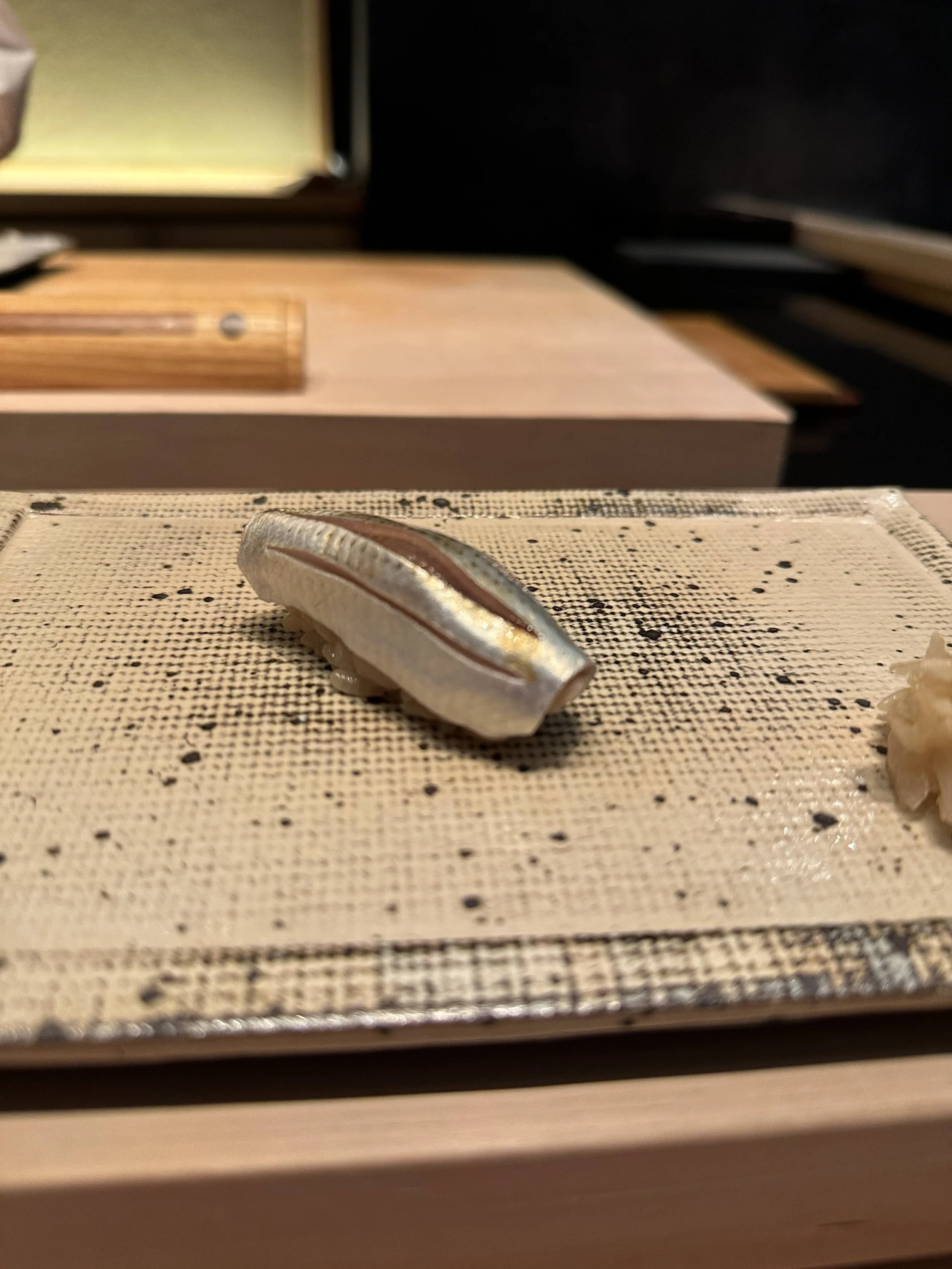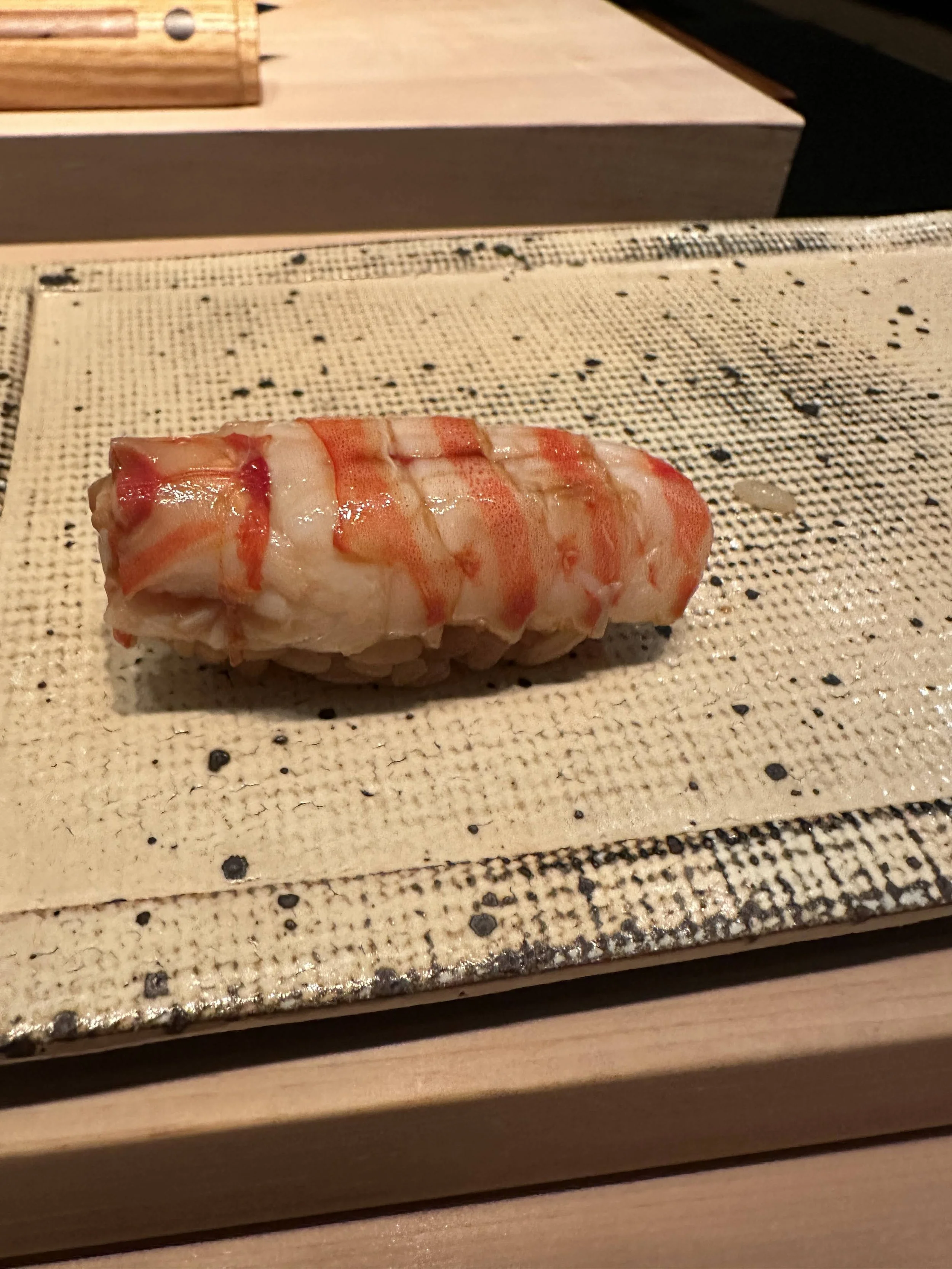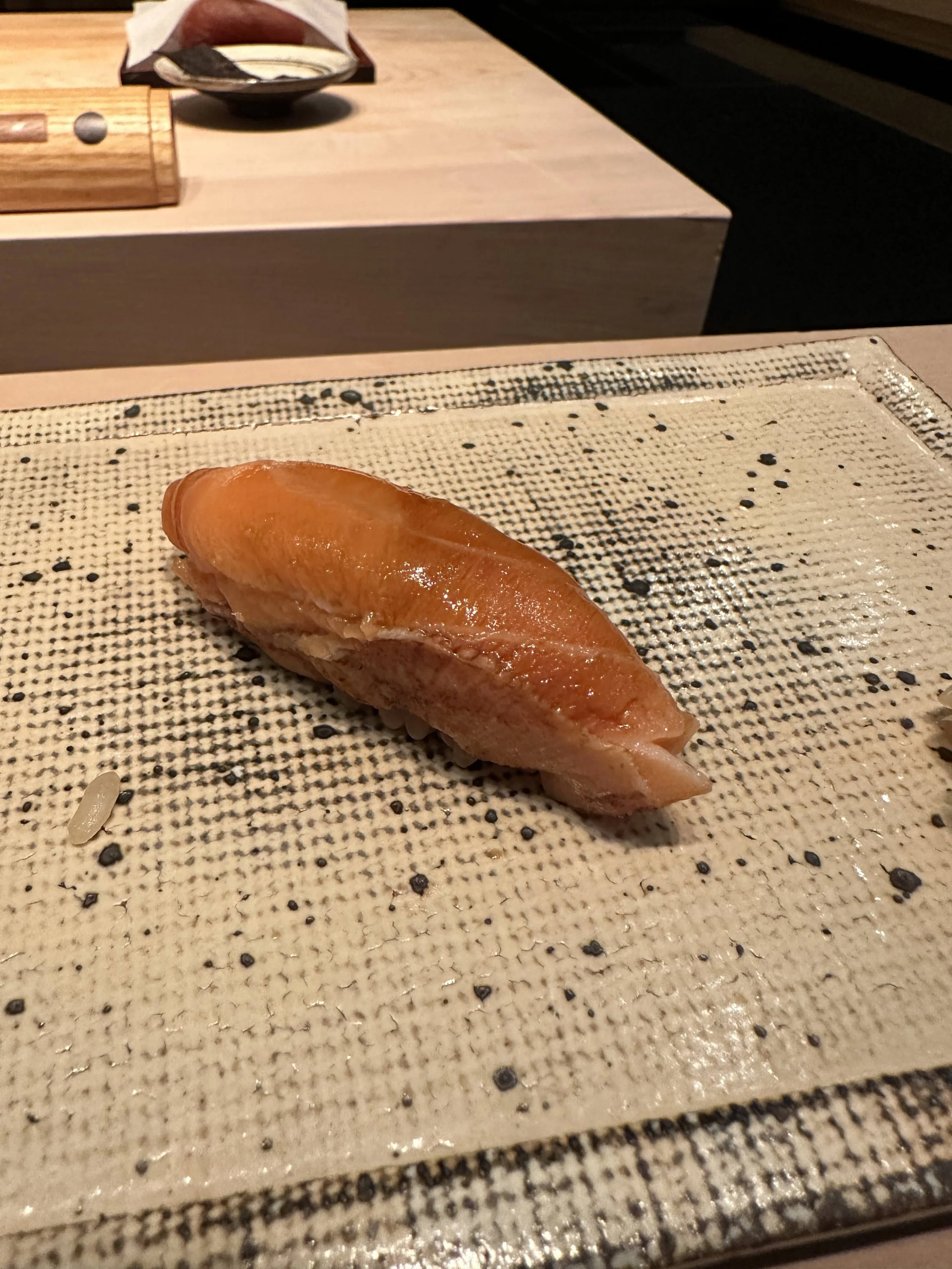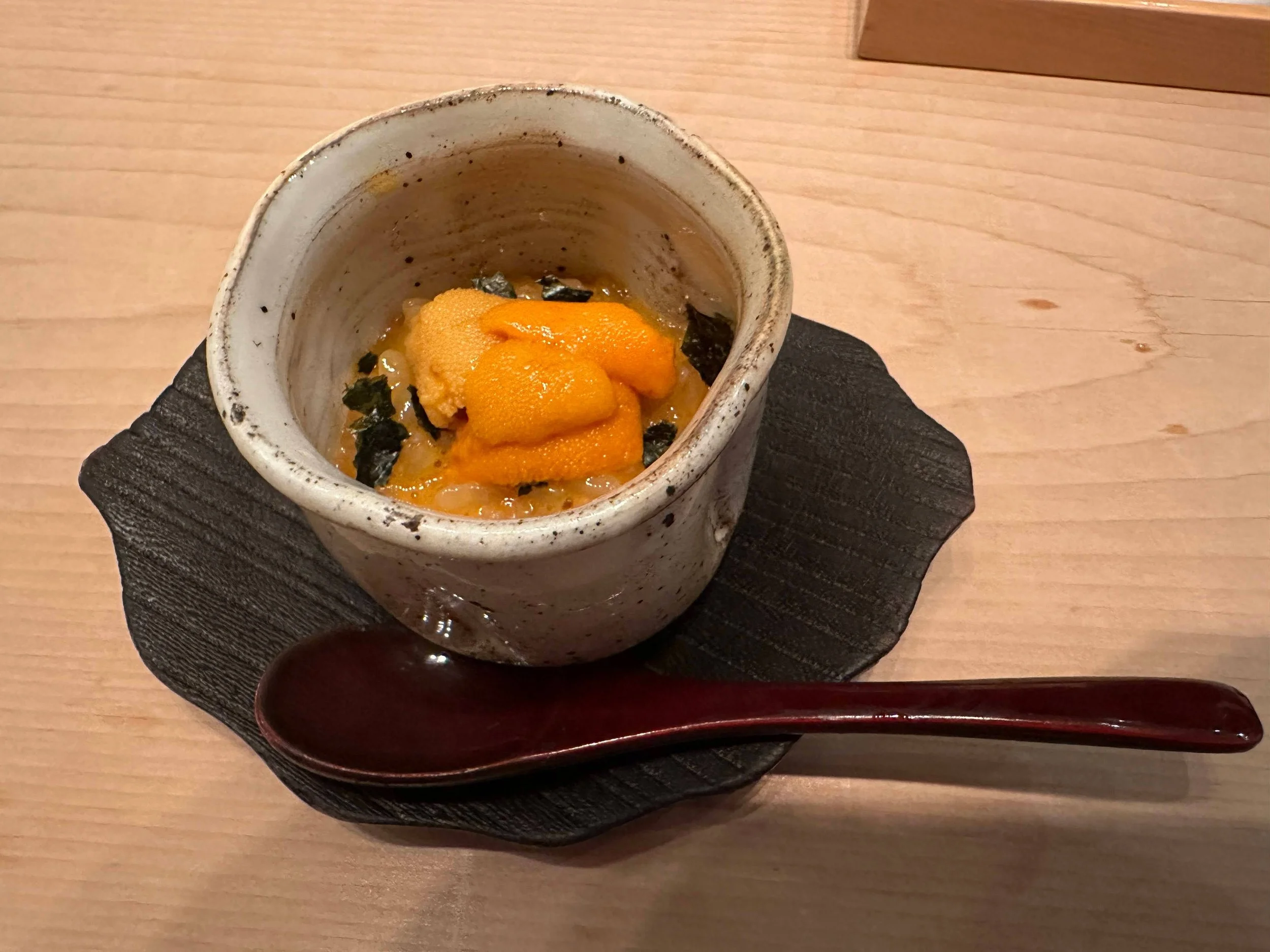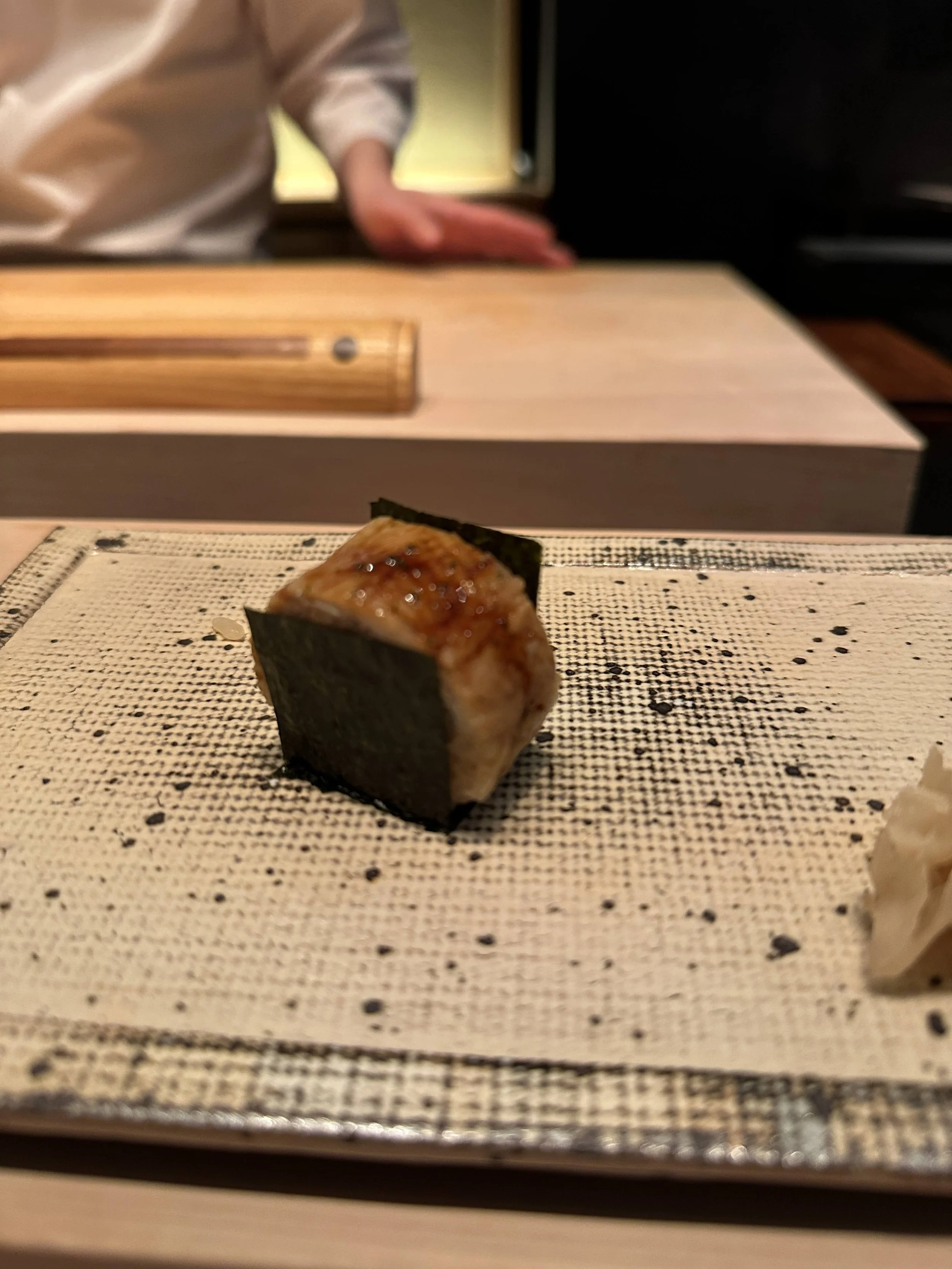Tokyo (May, 2025)
We ended our trip to Japan with a few nights in Tokyo. After taking the short Shinkansen ride from Atami to Tokyo Station, we left our bags at the Mandarin Oriental because it was too early to actually check-in. Before starting our first day in Tokyo, I headed to their bathroom next to the lobby and was surprised with the view:
With the urinals being individually placed by the window, it sort of felt like I was peeing on the people down on the ground—it was a very odd perspective.
And with that, we were on our way to Shibuya to hit up a few shops and also to get some more coffee. I realize now that we didn’t take too many photos of the area, but that’s because it’s always full of people everywhere, and we didn’t want to block the flow of pedestrian traffic. But we did find this amazing looking bubble tea shop:
Unfortunately, neither of us were in the mood for tea, but I loved the alpaca theme!
A few minutes away, we found this cute coffee shop:
We didn’t realize that the food options there were vegan and gluten free, but since we were there for coffee, that didn’t really discourage us from trying it out. We ordered a couple of drinks and found a small table tucked in the corner, where the shark theme continued:
I couldn’t take a photo of the entire cafe because there were too many people, but we really loved the chill vibes of the cafe, especially in contrast with the insanity that is Shibuya.
After enjoying our short coffee break, we noticed that there were a bunch of people and food trucks down the street. Nick was able to do some research and discovered that there was a street fair happening later in the day. I wanted to come back to see it, but we had a few hours to kill before it started, so we headed to a few malls to find some stores that I wanted to check out, specifically, the Nintendo Store and the Square Enix store. They’re located in two different department stores, so we also walked around Miyashita Park. Even without much of a plan, we still enjoyed just wandering around the area and finding some unexpected stores along the way:
I was sort of disappointed with the selection at the Square Enix store. Considering that they own the Final Fantasy franchise, I would have expected them to have a bunch of chocobo-themed items. However, they appeared to focus on Dragon Quest and other Final Fantasy characters. I did get a Moogle plushie and a sticker though, so at least I was able to find something.
While we were in Miyashita Park, we looked at the directory and saw a store called “The [] store.” We had no idea what it was and were extremely curious, so we headed down to the other end of the floor where they were located. It turns out that this space is actually a pop-up space for various vendors, and today, the vendor was a mens clothing store. Nick saw a t-shirt in the window that he wanted to try, so we walked in but we didn’t see anyone, so we continued to look through the small selection of clothes. Eventually, a woman came out from the back and was surprised to see us, but was happy to help us out. Nick asked about the shirt in the window and asked for a larger size, but the t-shirt was one size fits all. That probably works for the average Japanese person, but Nick isn’t, yet he still tried it on and it wasn’t too small on him. I asked about the sizing of another t-shirt, and it was also one size fits all, so I went to the changing room to try it on.
The woman apologized that there was only one changing room, and I said it was fine and I walked into it with Nick. When we came out of the room with the t-shirts on, we noticed that there were now four women in the store, smiling and giddy with excitement. Our guess was that they were happy to see a gay couple, and also seeing a 6’5” man trying on their shirts. They were super nice to us and they seemed genuinely pleased that we were there. After we purchased our shirts, we headed out of the store and continued to walk around Shibuya to kill time until the Night Market started.
Soon, we headed back to the area that Shark Coffee was located and entered the Night Market:
Much like the rest of Shibuya, there were a ton of people here, so navigating the crowd and the tables in the middle of the street was a challenge. It was full of various food trucks, which would have been great if we didn’t have a reservation for dinner in a few hours:
At the other end of the Night Market was the entrance to the Laos Festival. We didn’t spend too much time here, but it was full of various vendors and a stage where we watched one performance by an L-pop group perhaps? We weren’t sure, but it was still fun to watch for a few minutes.
We had a couple of hours before dinner, so we headed back to the hotel to actually check into our room. In the lobby was a small bar where a man was pouring welcome drinks to guests:
I can’t remember what the actual drink was, but I do remember that it was a welcome refreshment after all the walking that we had done in Shibuya. After cleaning up a bit and changing clothes, we headed back out to another popular area of Tokyo: Shinjuku.
I partly wanted to go there because another Square Enix store is located in Shinjuku, so I was hoping that it might have other items that I couldn’t find in the Shibuya store. The outside of the store was really cute, and sort of reminded me of the slimes from the Dragon Quest series:
This store also has a small cafe inside, but since we were about to have dinner soon, we skipped it, but it did look like it had some fun Square Enix themed food.
As for the items, unfortunately for me, most of it was the same as Shibuya, which is to be expected. But there was a cool back part of the store with some expensive figurines for sale along with a neat looking esper crystal in the center:
I did end up getting a couple of things here, so it was a mildly successful visit.
Next, we headed over to the famous Golden Gai district, with its narrow alleyways full of incredibly small bars. We were there around 6, so not really the time that it gets busy, but we were still able to get a sense of what it would be like during the peak late night hours. Walking around, you could see in many of the bars and see a small bar counter with at most like four seats and one person behind the bar. These are meant to be intimate social gatherings, and sometimes, the bar owner won’t let you in unless you’re invited (primarily as a way to serve their loyal customers).
Out of respect for the bar owners and patrons, we didn’t take any photos of inside any establishments, but you can sort of get the aesthetic.
Around the corner is Hanazono Shrine, so we headed over there and were surprised to see another night market there. It was sort of fascinating to see a 17th-century shrine surrounded by various food and craft vendors, all under a massive Torii gate:
It was finally time to head over to dinner, which was a couple of stops away on the train in the Takadanobaba neighborhood at a restaurant called Fry-Ya (literally, fried food store). When making the reservation, I had to specify which menu we wanted, and I opted for the second largest menu. After being seated at the counter, we were given our usual oshibori and the menu for tonight’s dinner:
All of the fried dishes, as expected, were amazing, especially the ‘exquisite chicken tenderloin,’ which Nick described as a life-changing chicken tendie:
Our only issue was that we felt that they started off with their best items (the chicken and the pork), and the rest of the items couldn’t match the high bar that those two set. Other than that one small criticism, it was a wonderful dinner in an intimate setting with the chefs frying everything right in front of us.
Afterwards, we headed back to the hotel and stopped by the bar for an evening mocktail before calling it a night. Tomorrow, it’s off to Azabudai Hills!
Day 2 (TeamLab Borderless and TeamLab dinner)
The next morning, after having breakfast at the hotel, we headed on the train to Azabudai Hills, a relatively new area featuring three skyscrapers. Inside one of them is the new location of the TeamLab Borderless exhibit. It used to be in Odaiba, which we visited a few years ago, so when I read that it moved with some new exhibits inside, I wanted to see what it was like. We got to the area early, so we looked around for some coffee and discovered this rather sleek coffee shop (Ogawa Coffee Laboratory):
They seem to focus more on selling their beans, but they did offer a pour over coffee, which we ordered. There’s no cream or sugar available, which seems appropriate given how serious they appear to be with their coffee. I’m not a fan of black coffee, but Nick is, and he said it was a good cup of coffee.
We continued to explore Azabudai Hills a bit and found some lovely outdoor areas with some art on display:
We then headed to the entrance to TeamLab Borderless and then dropped off our bags in their free lockers. Next, we were instructed to go further inside where we waited for the attendant at the entrance to let us in through the turnstile (I guess to somewhat regulate the flow of traffic into the space).
Soon, it was our turn to go in and get lost in the digital world of TeamLab. Experiencing this in person is so amazing and unfortunately, it’s hard to show the full impact of the art in photos. Also, it’s such a tourist activity that we had to constantly navigate large crowds of people standing around taking photos. But if you’re lucky and can find a spot with a few people around, it’s quite breathtaking.
The majority of the space was the same as their old exhibit in Odaiba, but that’s expected given that the name of the exhibit is the same. However, this new location felt much smaller, mainly because there’s only one floor. In their Odaiba location, there was an entire second floor that you could explore. Additionally, when we visited, one of their installations was undergoing maintenance, so that was one less room we could see.
I think we spent like 90 minutes to 2 hours there, and we were stretching it a bit. For those of you who’ve been to their old exhibit in Odaiba, I don’t know if it’s worth it to come back to this one because a significant portion of it will be identical. However, there is a cool section where you color in a sea creature and it gets scanned into their system where your creature will appear in a digital seascape.
After leaving TeamLab Borderless, I wanted to head to Aoyama to do some shopping. Previously on this trip, I bought some shorts at Issey Miyake and was surprised at how affordable it was in Japan. I compared the price that I paid in Japan compared to what it would cost in the US, and it was significantly less, so I wanted to take advantage of this.
I won’t bore you with the shopping details, but I did find some cool items at Issey Miyake and Yohji Yamamoto in Aoyama. We also stopped by the Prada Aoyama store, mainly because the exterior is such a cool, honeycomb like structure. But as we walked up to the entrance, we saw this:
Hideo Kojima is primarily known for being the designer of the Metal Gear franchise, so when I saw his name and Prada in the same poster, I was intrigued at the crossover of fashion and video games. We were instructed to go to the fifth floor where a man approached us and asked if we were registered in their system, which I was. After looking up my account, he presented me with four different colored cassettes and told me that I could choose one to take with me as a souvenir. I chose the purple one:
The contents of the tapes were all identical though: the audio transcript of the conversation with Hideo Kojima and film director Nicolas Winding Refn. The entire floor was designed with a midcentury modern futuristic theme, with a bedroom and living room and screens displaying the conversation. You were invited to watch the conversation, but it’s fairly long, so we didn’t really want to spend that much time there. But it was cool to see the exhibit:
We then returned to the hotel to get ready for our TeamLab themed dinner in Ginza. From what I read, the dinner is in a room with a long communal table, and the art is projected onto the walls and the table. When we were seated, we were given some instructions by our server on how to interact with the table, such as moving our plate around and holding our hand over some of the projected art. I don’t know how often the theme rotates, but our theme was focused on flowers through the spring season:
Shortly after giving our drink orders, the first dishes started to arrive:
Similar to TeamLab Borderless, static photos don’t really show the full experience because really, all the art is moving and there’s different music as you go through the scenes. I can’t easily add videos here, but I did create this folder with some videos here.
To be honest, the entire experience was underwhelming, especially with the high price of the dinner per person. The food was good, but not $300/person good, and given that we went to TeamLab Borderless earlier in the day, the art at dinner wasn’t as impressive. So yeah, I wouldn’t recommend this dinner especially for the price they’re asking.
After dinner, we called it a night back at the hotel. Tomorrow, we were going to an area we’ve never been before: Kawagoe!
Day 3: Kawagoe
For our final full day in Tokyo, we decided to take a day trip to the town of Kawagoe, also known as Koedo (or ‘little Edo’) because of the many stores and buildings that are from the Edo area.
It took a while to get there from Tokyo station, mainly because we got on a slower train from Ikebukuro, but eventually we made it to Kawagoe. We immediately walked down the road that takes you to the famous warehouse district, which was also filled with various stores and signs:
Soon, we were at the warehouse district, which is where the various Edo buildings are located. There was a cute little shrine and even the tourist information center was adorable:
Starbucks also maintains the Edo style theme:
We didn’t actually get any drinks here, but we did stop at Kawagoe Fukuroya for some coffee. Besides drinks, they appear to specialize in Japanese souffle cheesecakes. They also have a cute upstairs area to enjoy your drinks/food and escape the craziness going on outside:
We then headed to the site of the original Kawagoe castle, where the only remaining structure is the lord’s residence and part of the outer wall.
While the castle itself was built in 1457, the residence was built in 1848, and for ¥100 per person, you can go inside. There are quite a few rooms that you can walk around, as well as some small exhibits explaining the history of the castle.
And outside the residence was this small shrine:
We headed back to the warehouse district to explore the various stores and small streets. A popular snack to get in the area is roasted sweet potato (or yaki-imo). There are many stores selling various varieties of yaki-imo, either plain, in a dumpling, or in ice cream. We started off with a roasted yaki-imo brulee, which is a cut roasted sweet potato filled with custard and bruleed on top:
I love sweet potato, but the addition of the sweet custard and crunchy brulee topping helped give some additional sweetness and texture to the sweet potato.
We then wandered down the various side streets, appreciating the art and architecture of the area:
We initially thought that the interesting part of the town was the one main street, but we were pleasantly surprised to find the numerous side streets that also had tons of stores and cute homes. If we had more time, we would have walked around a bit more. However, we did stop by a couple of shops to get a sweet potato dumpling and some ice cream:
On the way back to the station, I wanted to stop by a chopstick store, Karakimokkou, that I remembered seeing on the way in. It turns out though that it wasn’t just a chopstick store, but a woodworking shop where you make your own chopsticks. We had time and thought it would be a fun activity (and we’ve both done wood shop in the past). First, you find the wood you want to use from a display. Each type of wood has its own price and also the store’s guide on how hard the wood is and how difficult the process of making the chopsticks with that wood would be. Neither of us wanted to go with plain brown wood, so I opted for a burgundy wood and Nick chose a black wood.
We then were shown to our stations and given a short explanation of the process:
There’s also written instructions available in case you forgot what the instructor told you. But the entire process was pretty simple, first you use the small wood plane to shave down the two wooden sticks into a chopstick shape. Each side of the stick has a number, so you shave down side #1 until no more shavings come off, move to #2 and continue the process for the four sides on each stick.
Next, you have to sand down each stick to get rid of the sharp edges and also to create a much finer point at the end. They have example chopsticks at each station as a guide, which was extremely helpful. The sanding process actually took longer than the shaving process.
And finally, you dip each stick into oil which you then spread around all of the chopstick using a paper towel. They provide you with a paper band to hold the pair of chopsticks as well as a small plastic package to store them in:
I think the entire process took us about 40 minutes, but we did choose some pretty hard woods, so if you opted for a softer wood, the carving process might have gone faster. Also, we got lucky because there was no line when we arrived. While we were there, the store was full and there was a waitlist out front. But even so, it didn’t seem like that long of a wait. This was such a fun and unexpected activity, and we’re so happy we stopped by.
On the way back to Nihonbashi, we had to change trains in Ikebukuro, so we took a moment to walk around that part of Tokyo. My understanding of the area is that there are a lot of claw machine arcades, including some really large ones. We didn’t have much time to play around there, and knowing my luck, we wouldn’t have won anything anyway.
There were also other arcades and many department stores, but we didn’t have too much time before we needed to head back to the hotel for dinner, so we went returned to the train station back to Nihonbashi.
For our last dinner of this trip, I made a reservation at Sushi Shin by Miyakawa. Their Hokkaido location is the original one, and also the restaurant with three Michelin stars. The Tokyo location doesn’t have any stars, but it does have a great pedigree.
I can’t speak about the Hokkaido location because we’ve never been, but the Tokyo location is one of those intimate sushi restaurants with counter-only service, and I think there’s only like 8 seats at the bar. When we arrived, we noticed that there was a setting for two more people, so there’d be four people total this evening, and given that there were two chefs behind the counter, this was going to be a very personal sushi experience. Our chef, Chef Uno, was literally standing in front of us and preparing each dish:
It was about 15 minutes into dinner that we started to wonder what happened to other two diners, and we eventually found out that they weren’t going to make their reservation. This meant that it was going to just be the two of us in the restaurant with our own sushi chef!
The dinner started off with a series of delicious appetizers with a focus on seafood:
Each dish was individually prepared by the chef in the back, the other sushi chef (who now has nothing to do because the other two patrons didn’t show up), and Chef Uno. There was also a server who attended to our drinks, so we were outnumbered 2:1 by the staff here.
Once the appetizers concluded, Chef Uno started the main event: individually preparing sushi for us! He told us that we could use chopsticks or use our hands to eat each piece (they provide you a wet finger towel to use). There is no soy sauce or wasabi anywhere as each piece is meant to be enjoyed the way the chef has prepared it, and it was all spectacular!
And here’s a video of Chef Uno preparing one of the nigiri for us:
There’s something hypnotic about watching a master in his element, with his specific rhythm and techniques on full display for us to appreciate.
I will say though, there was something mildly intimidating being the only people in the restaurant and Chef Uno standing there watching us eat each dish after it’s been presented to us. Still, it was the best sushi experience we’ve ever had!
And sadly, that was the last evening in Japan for this trip. The next day, we headed back to Narita to take the flight home. Personally, I would love to come back again next year, so we’ll see…if there’s another good deal on flights, I’m pretty sure I could convince Nick.


